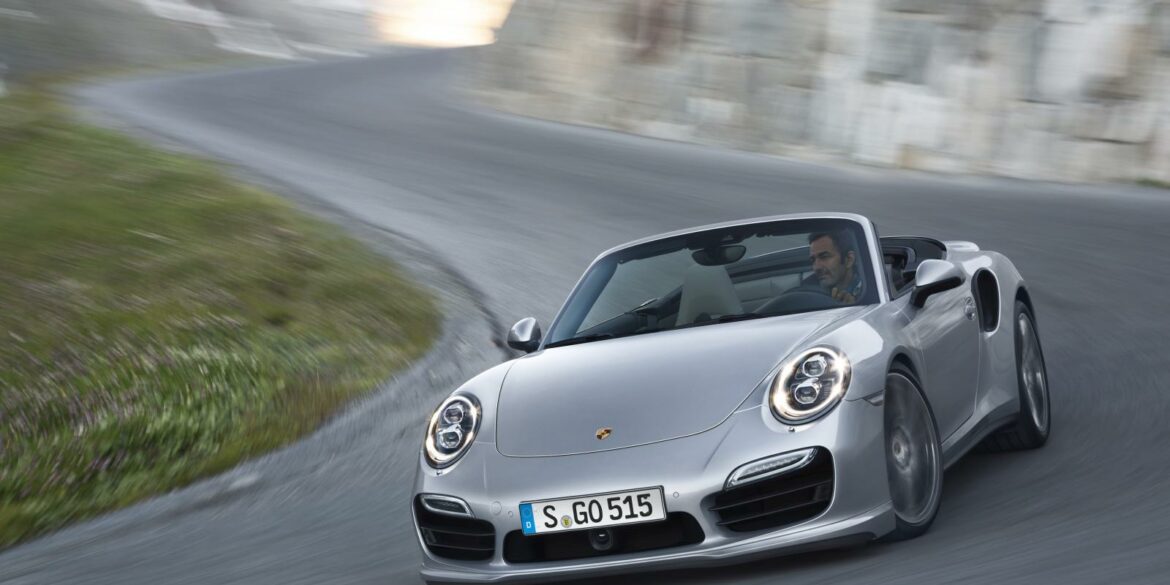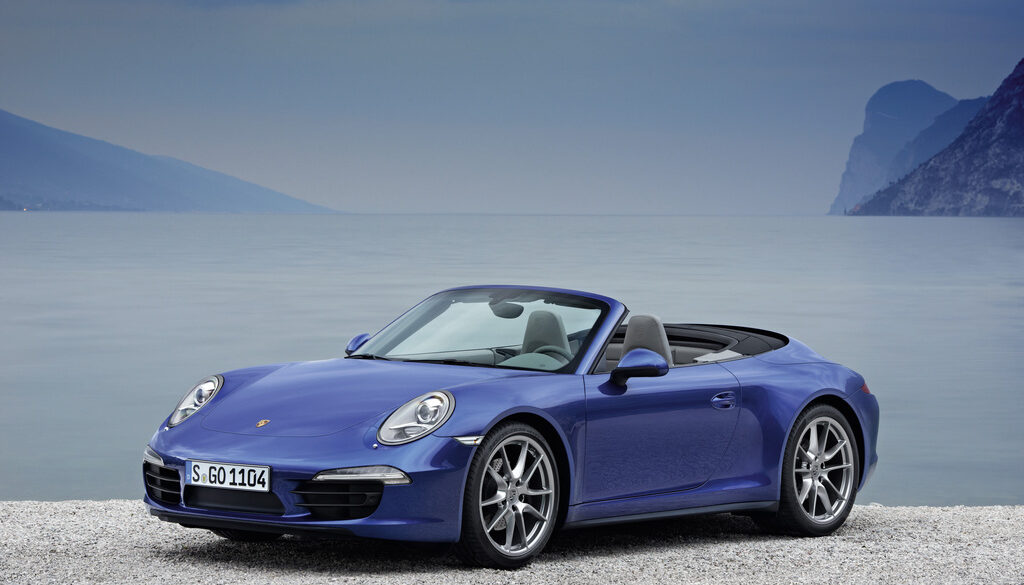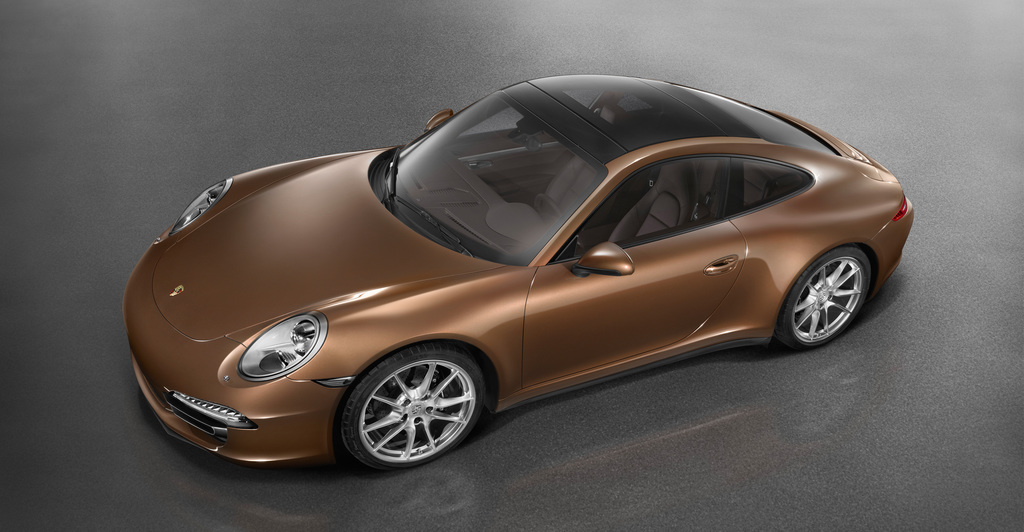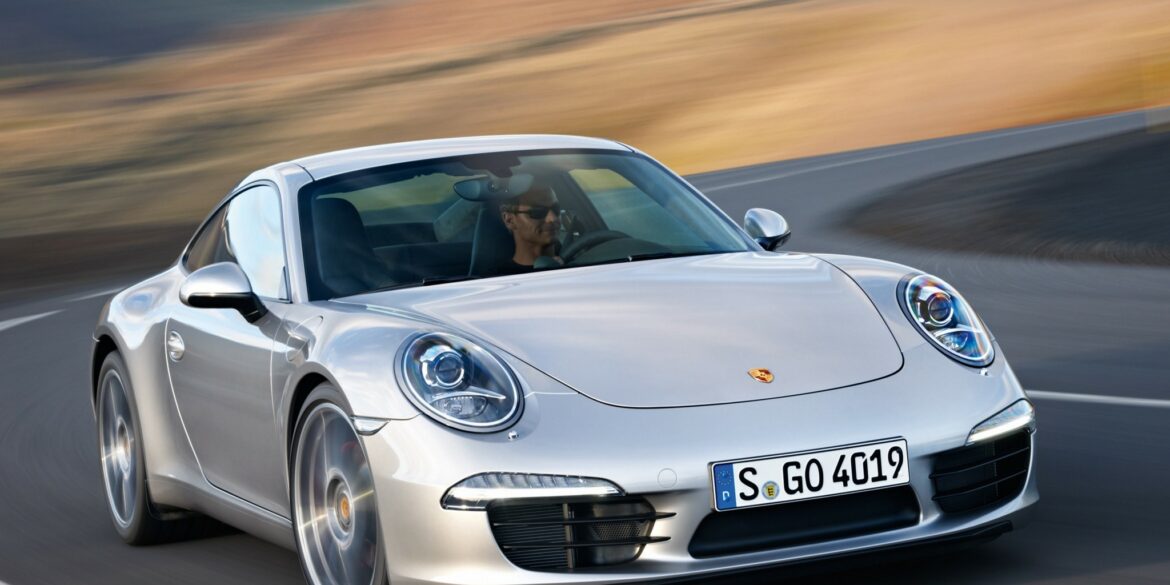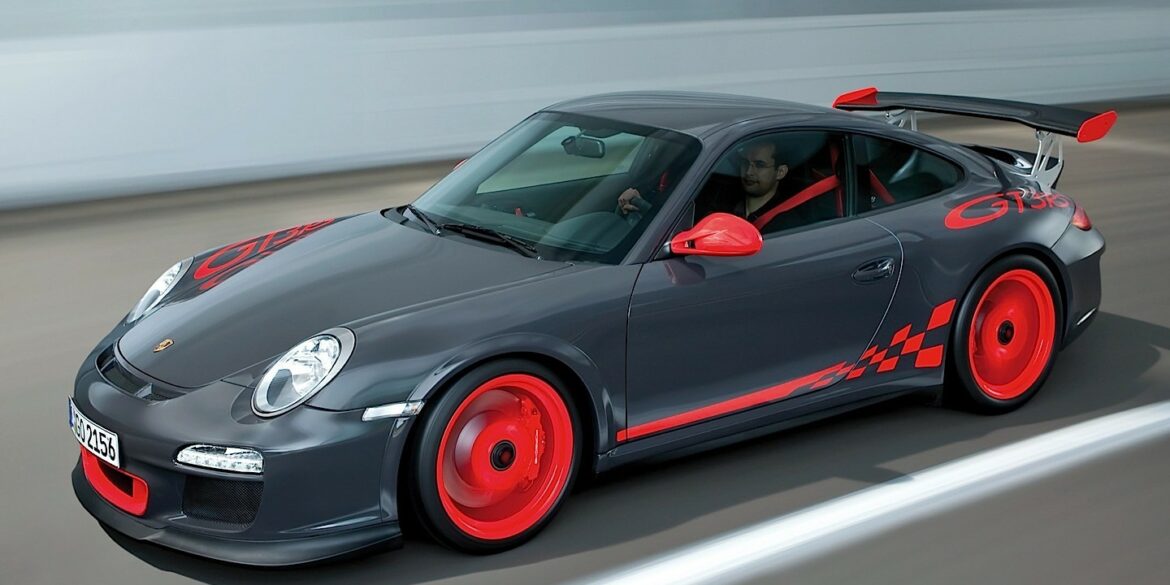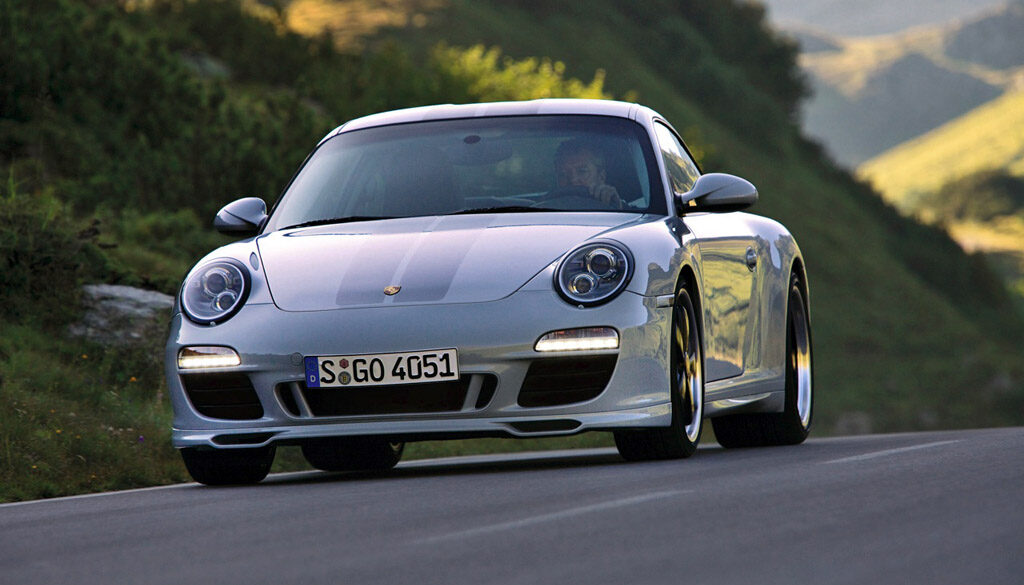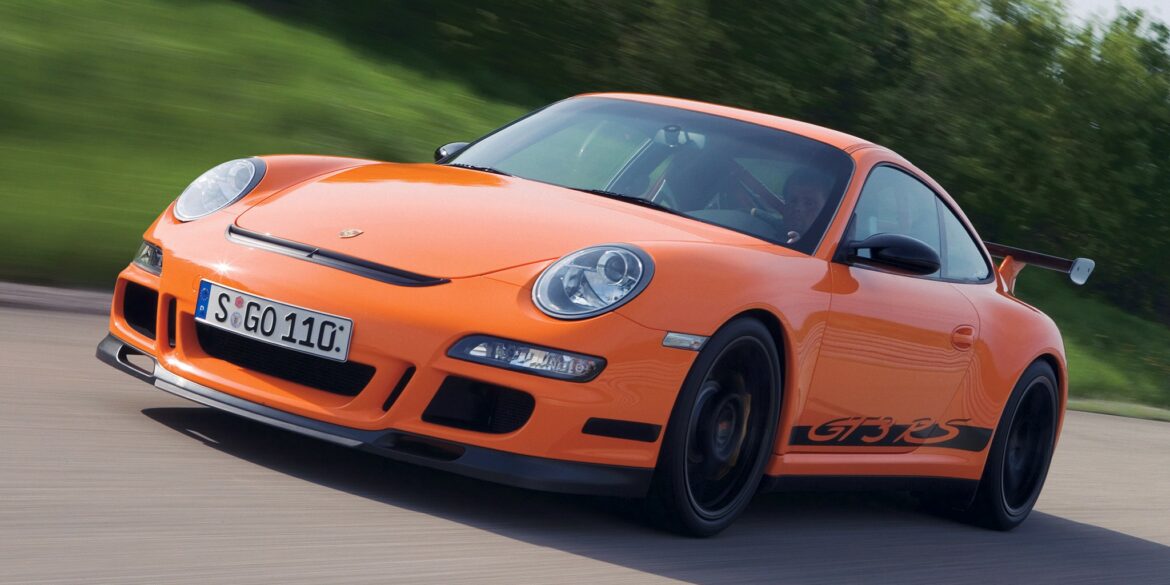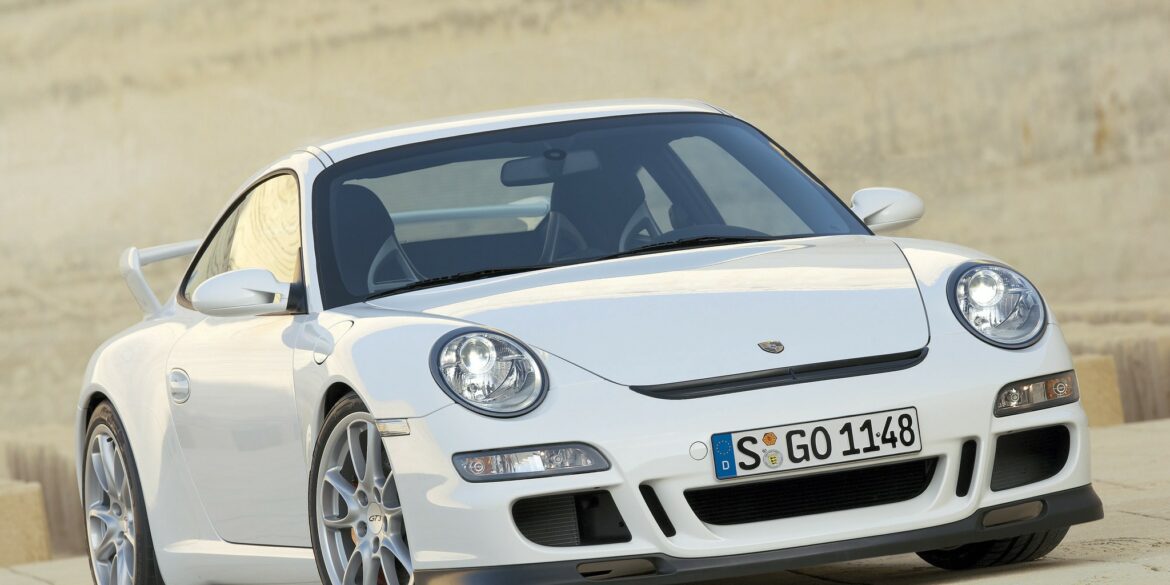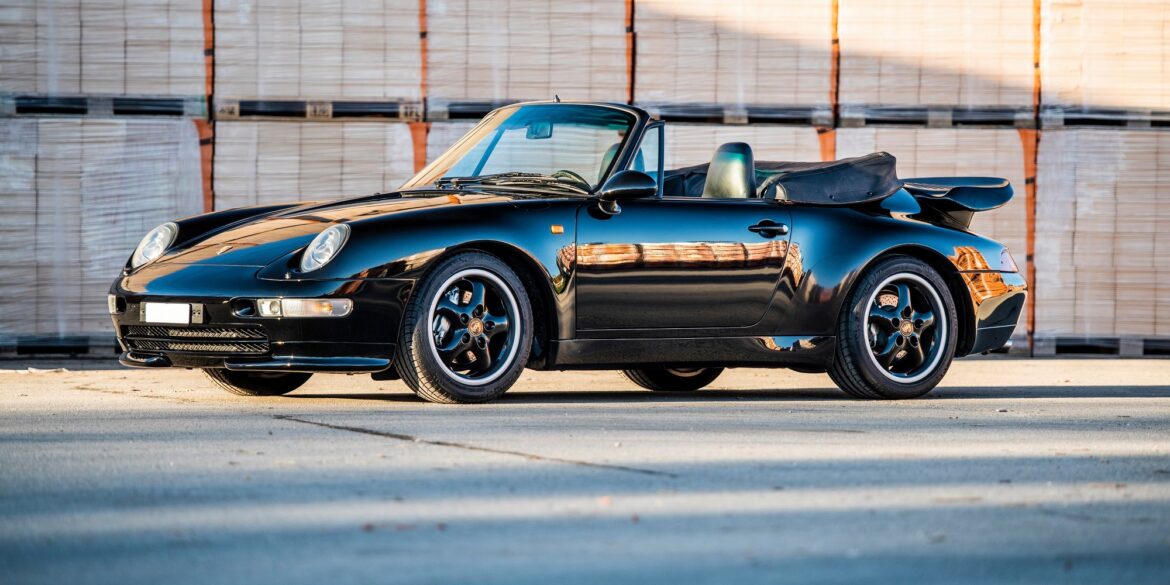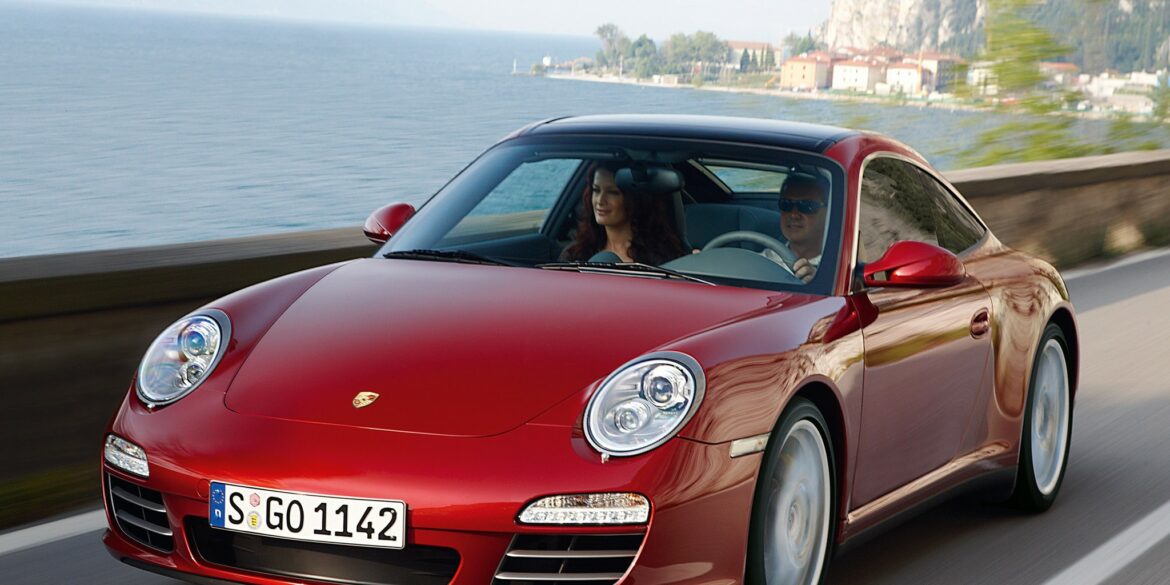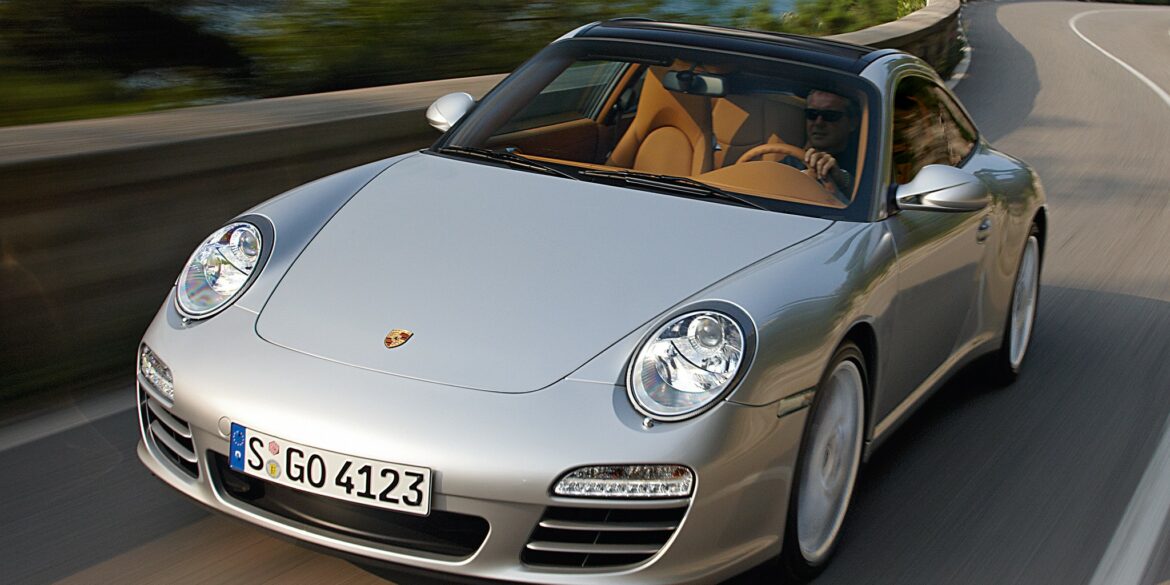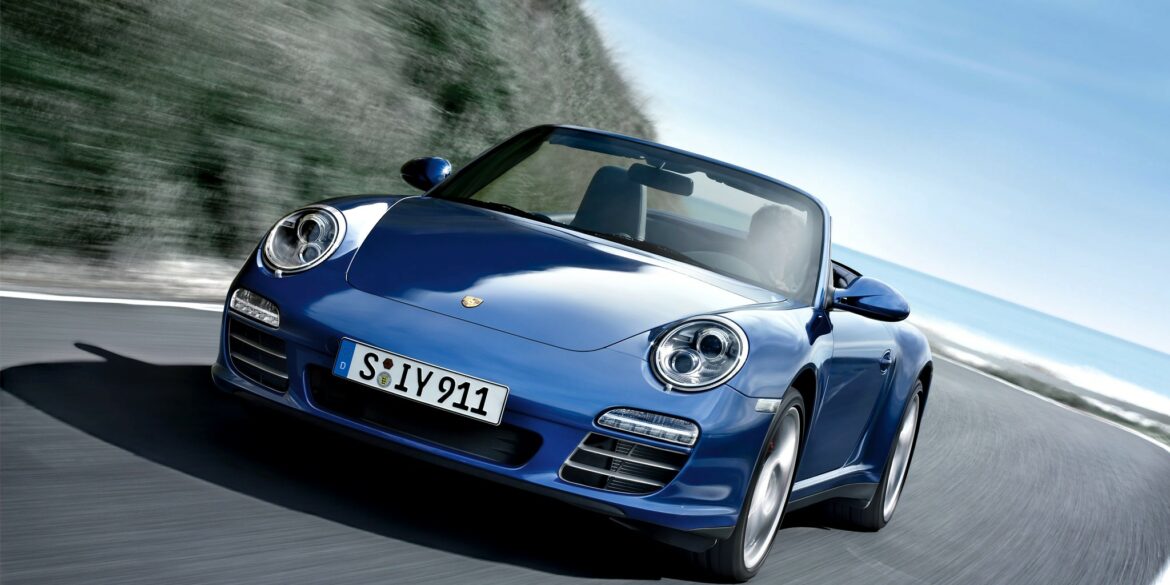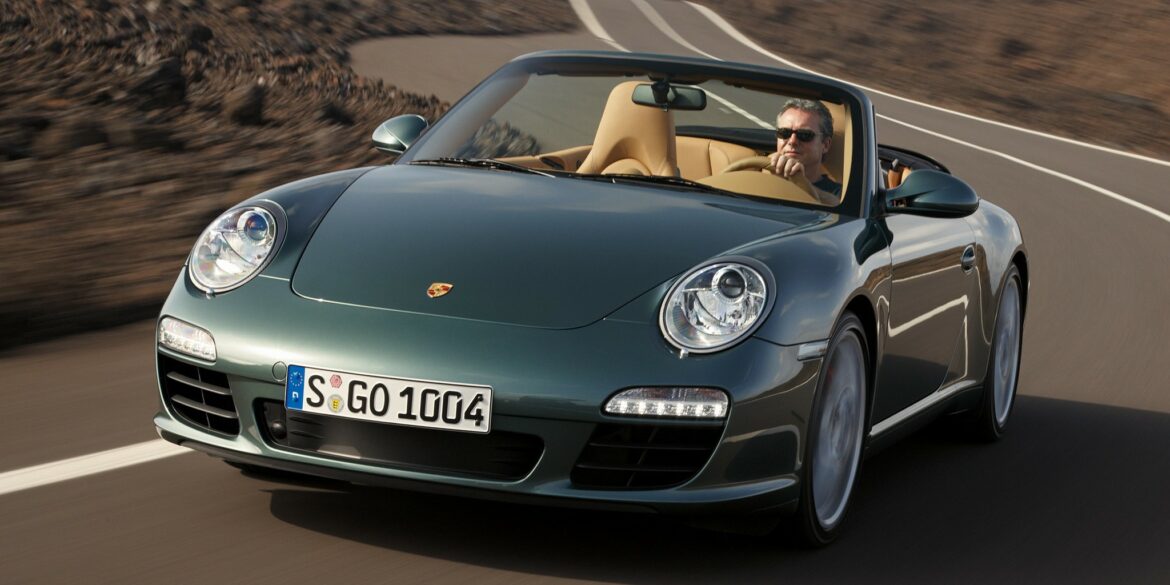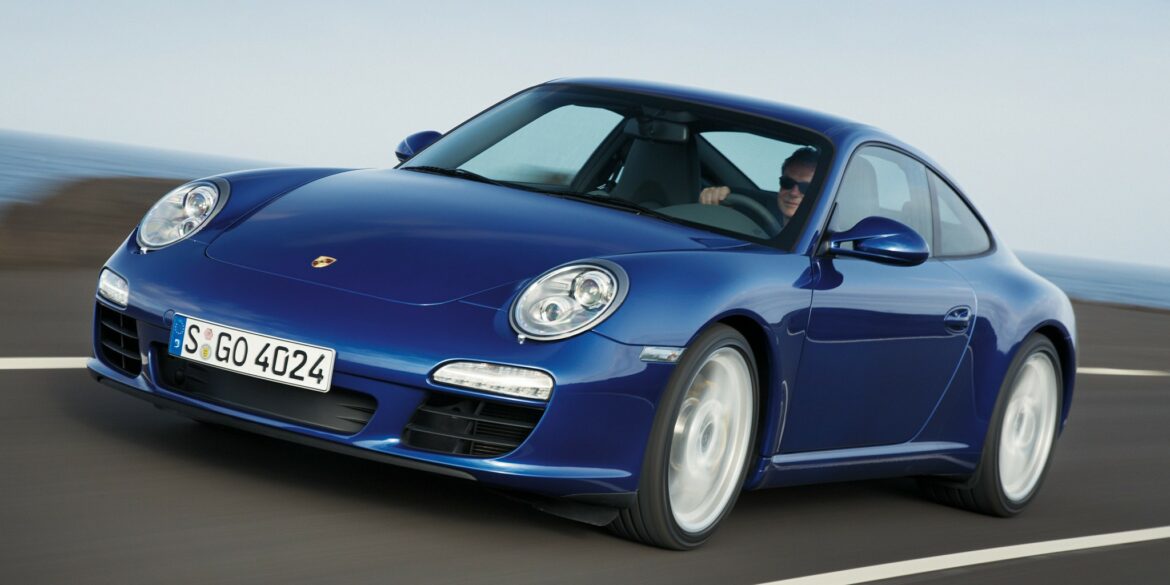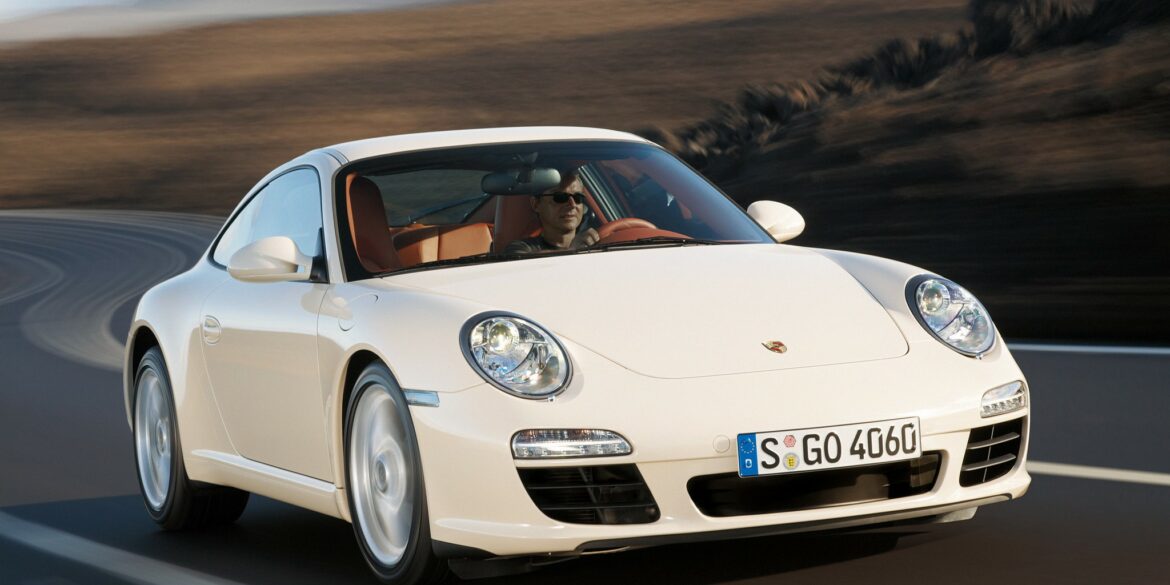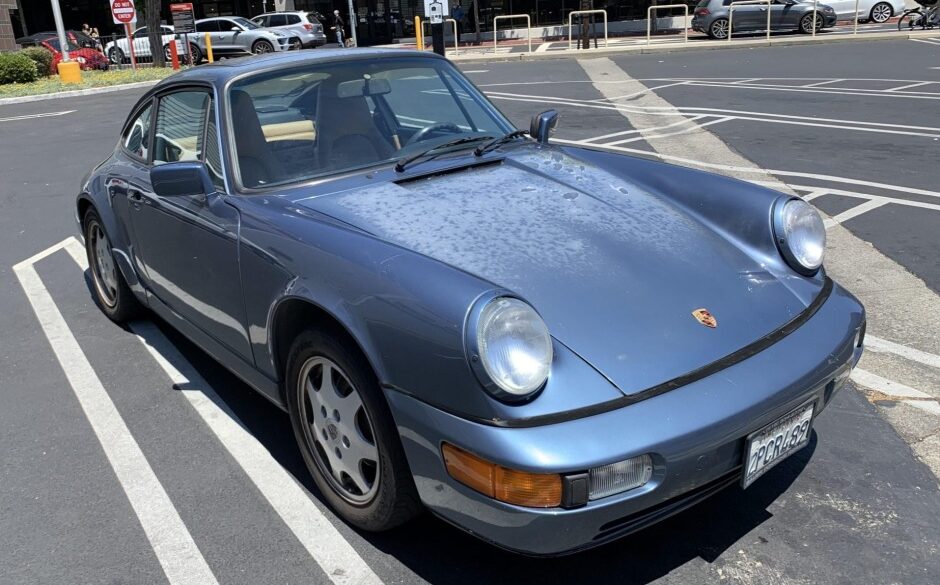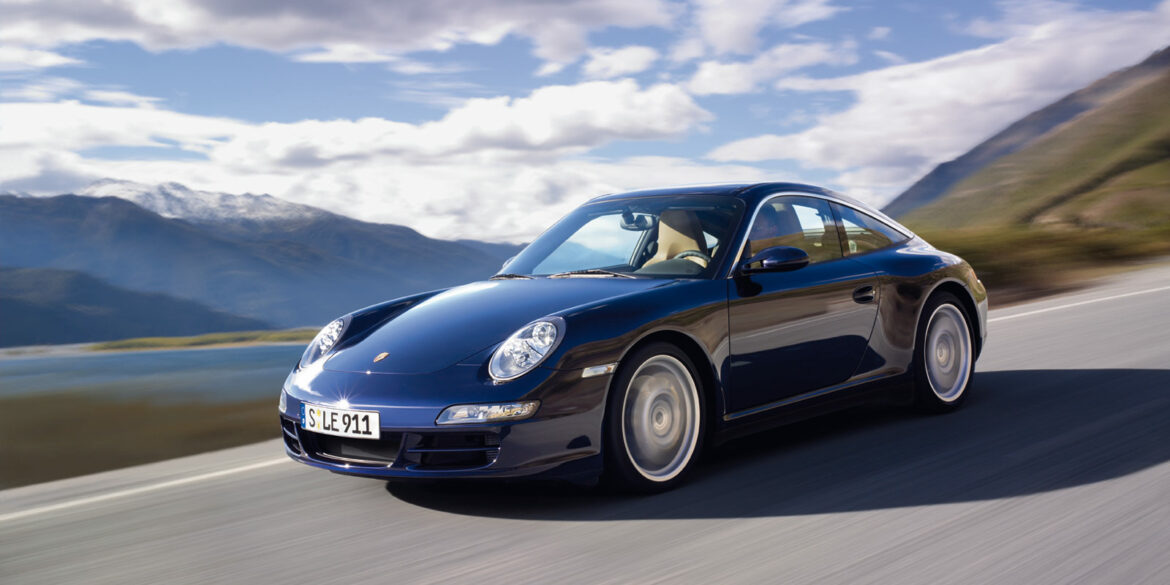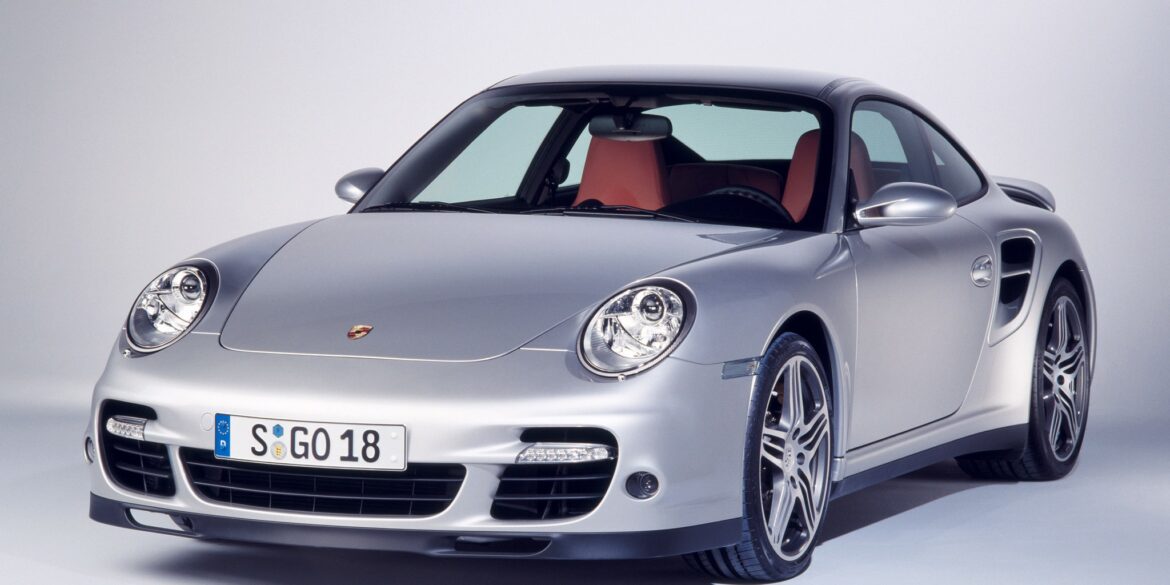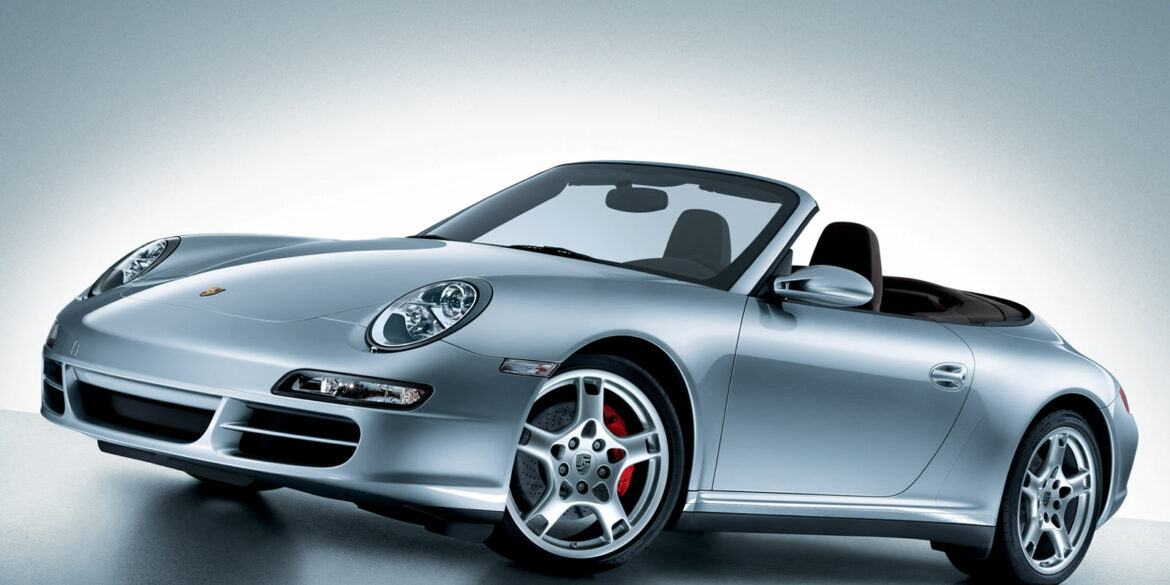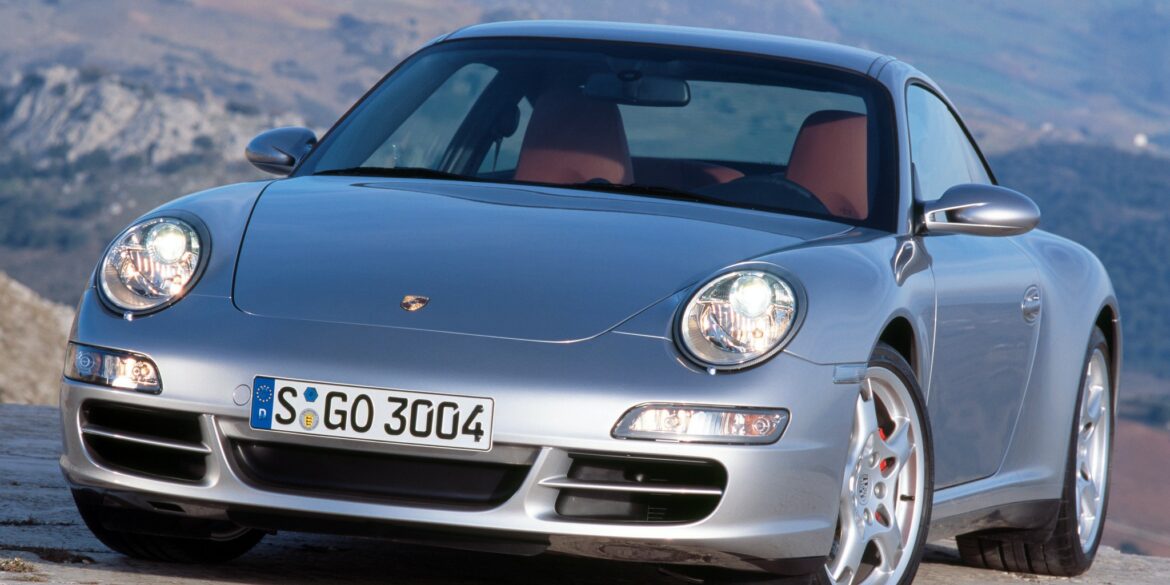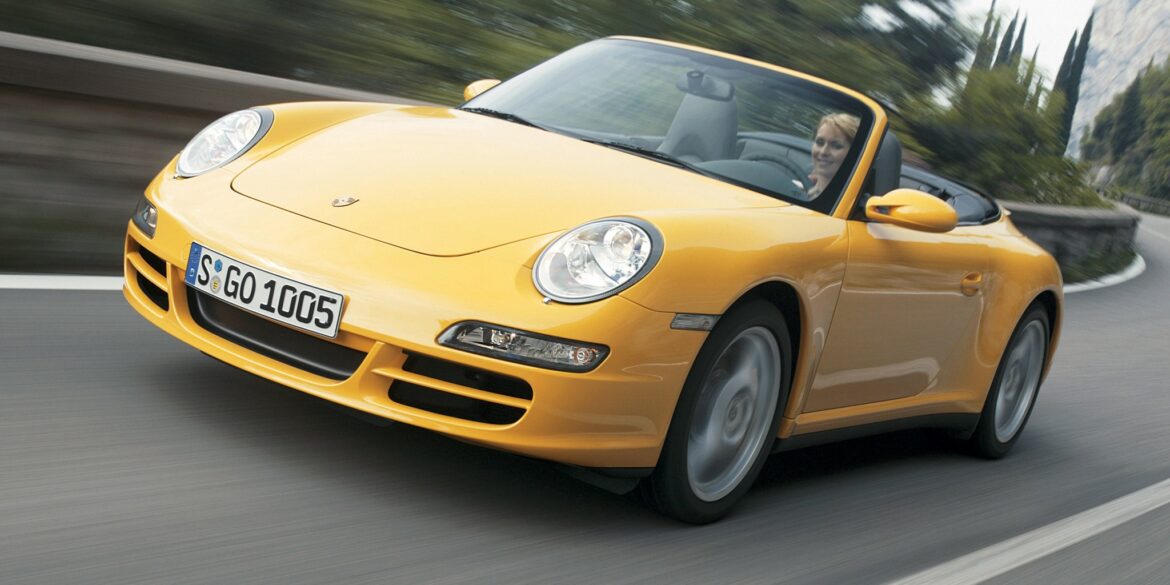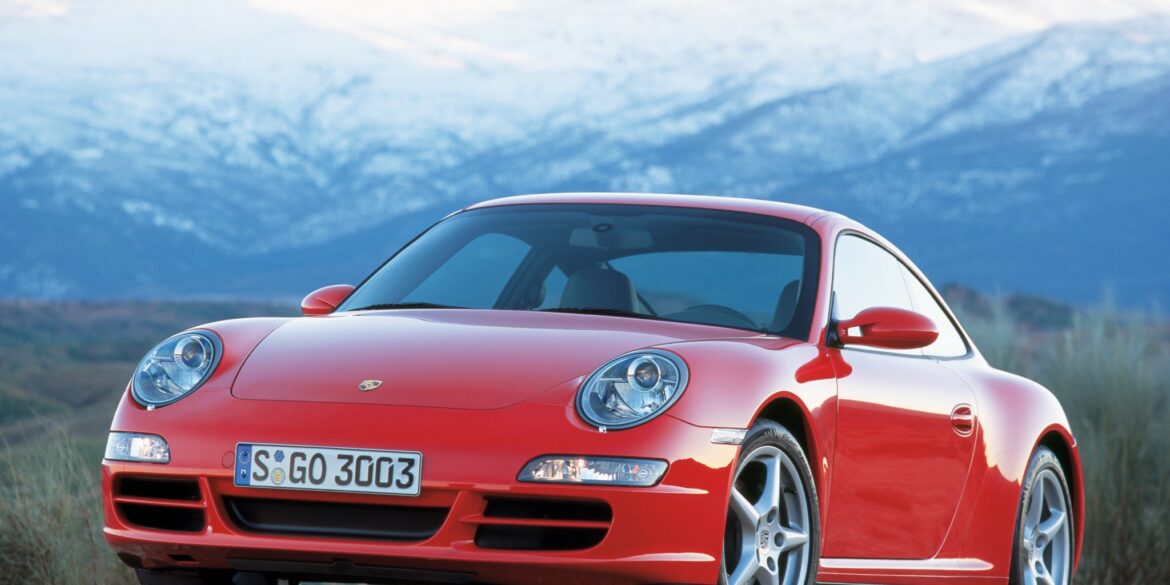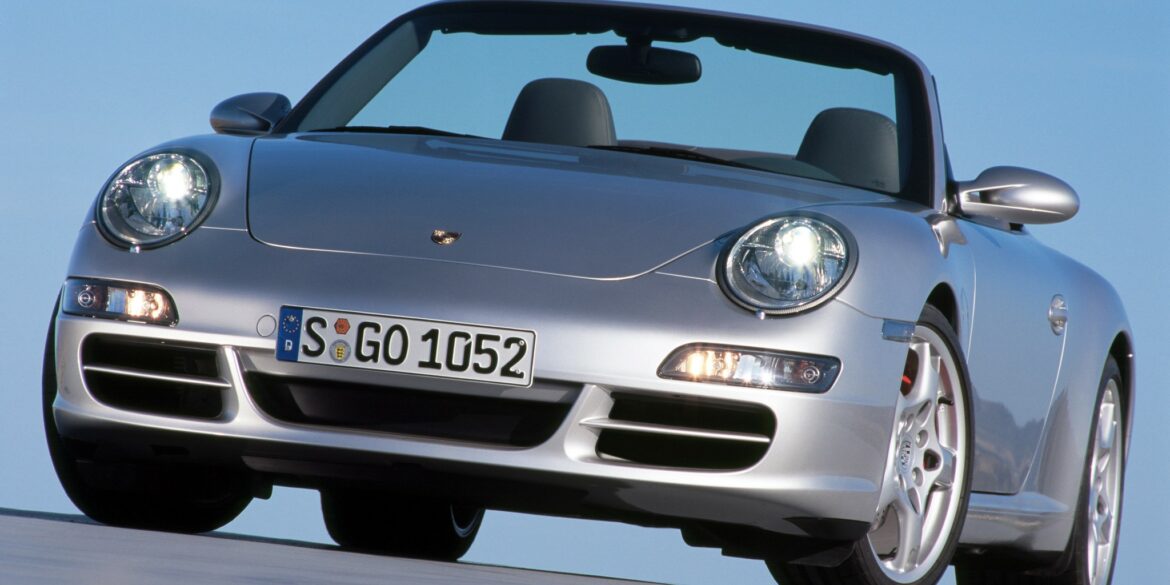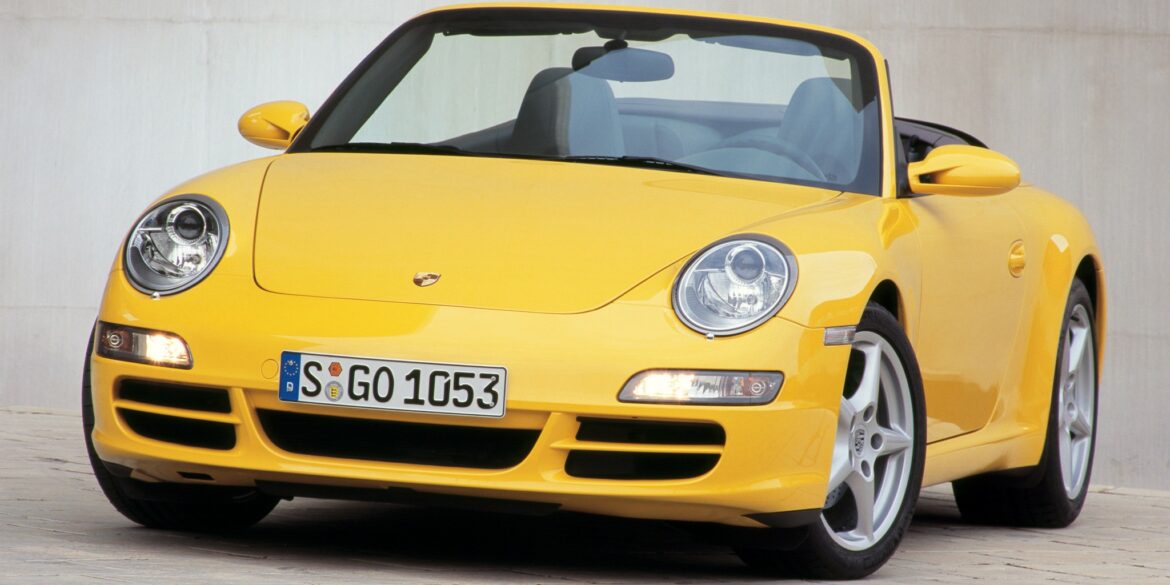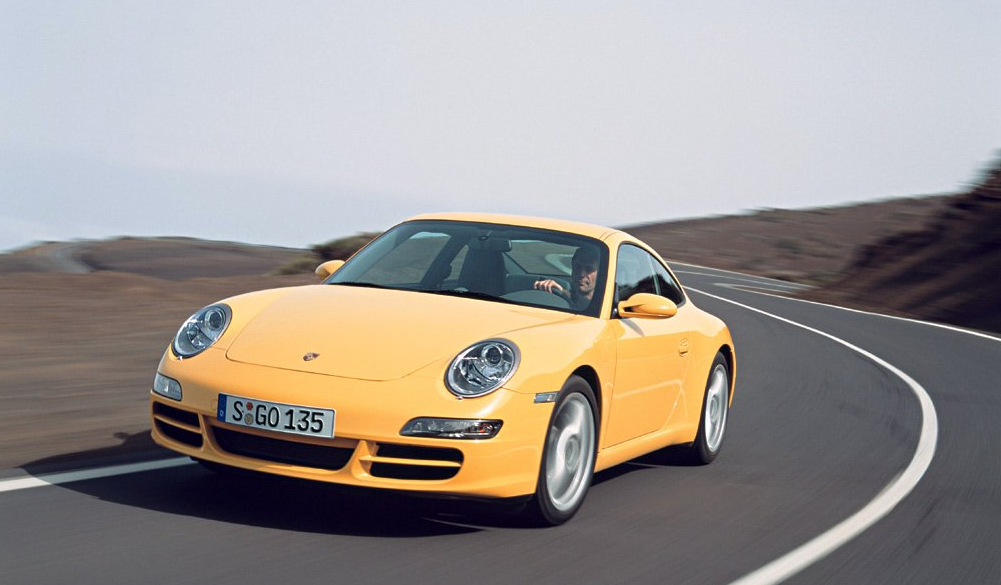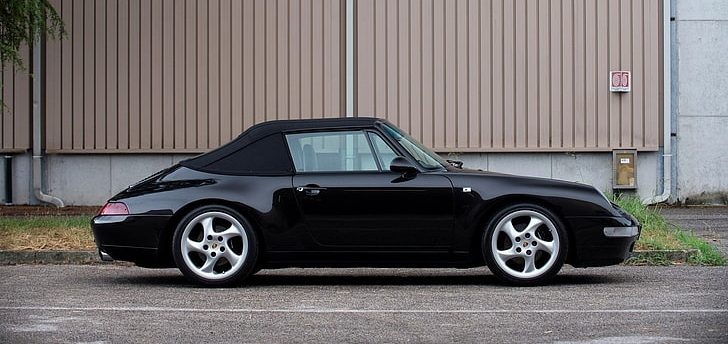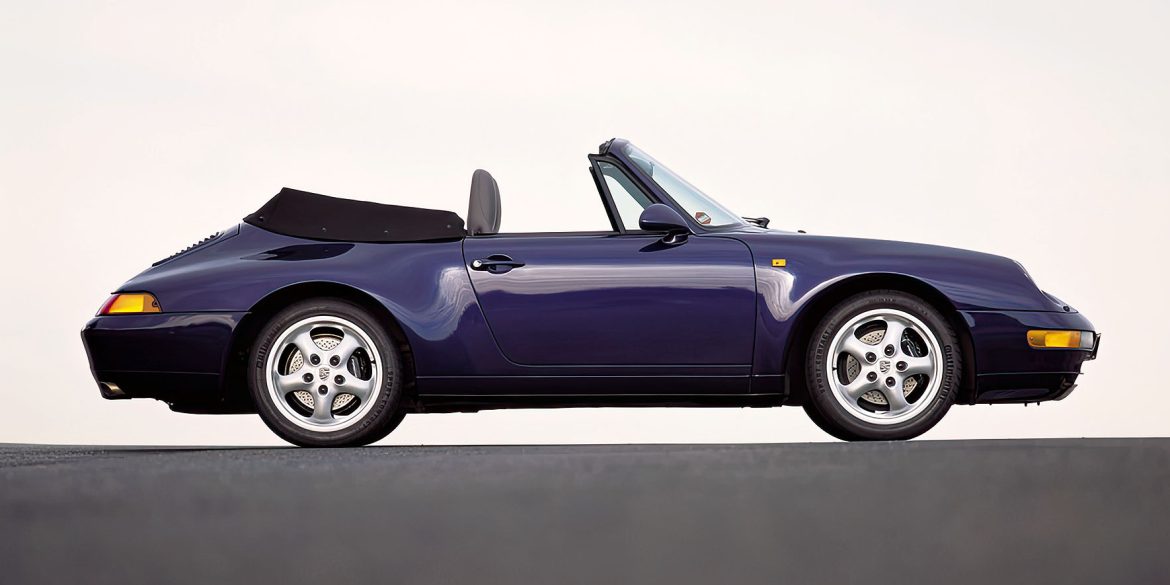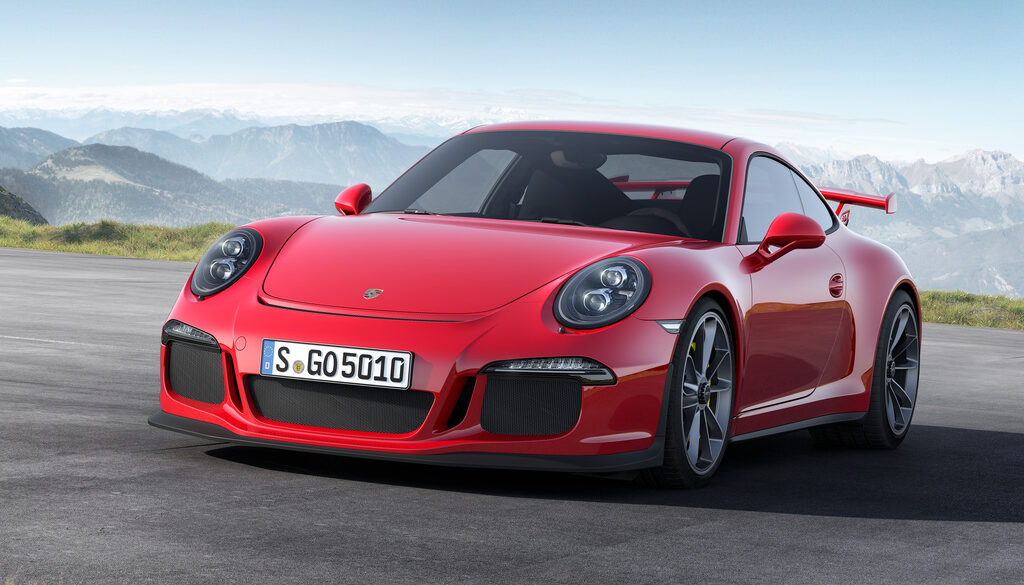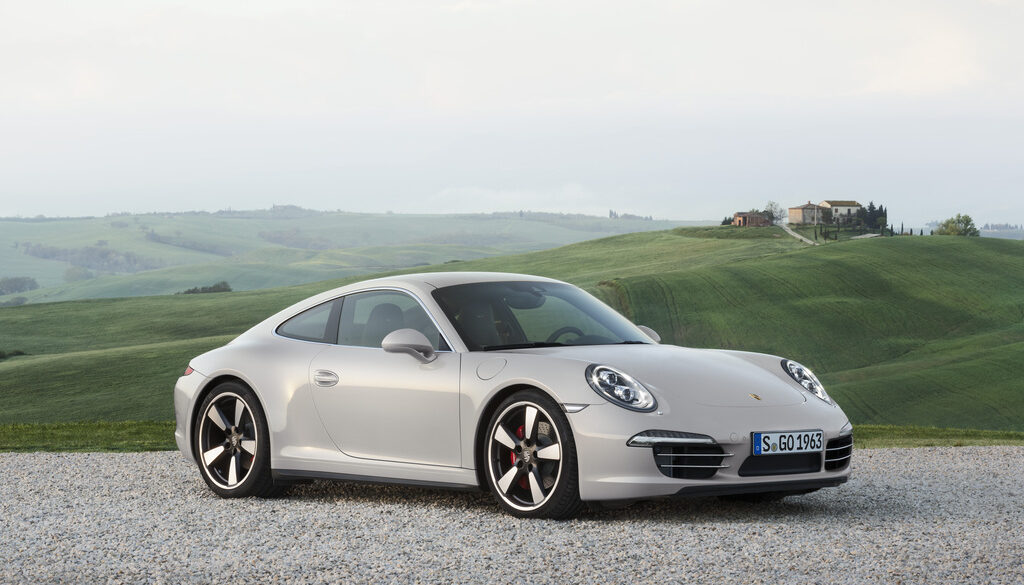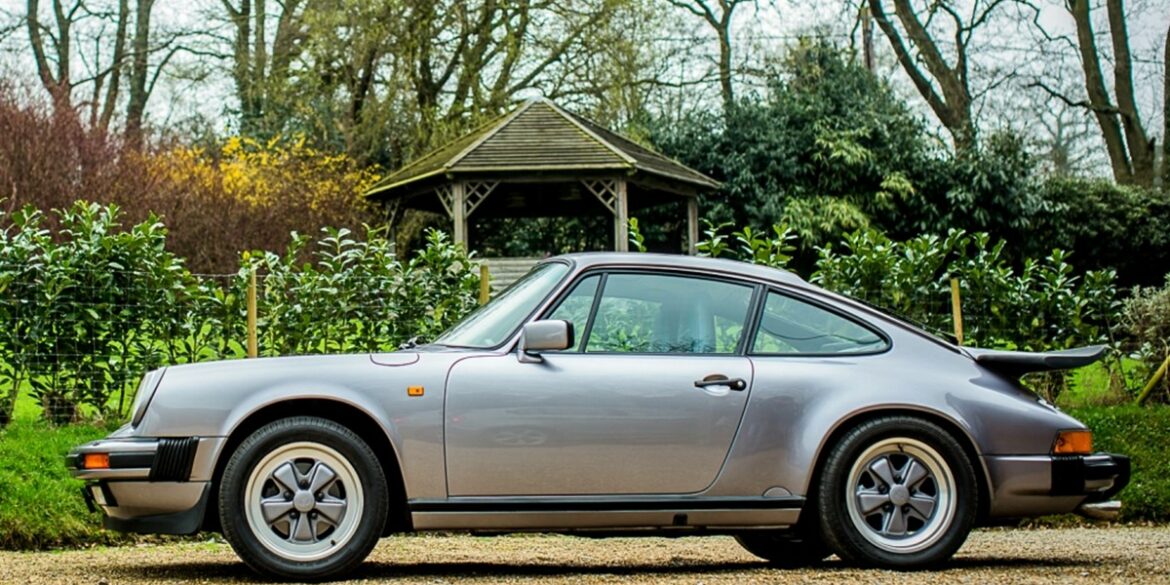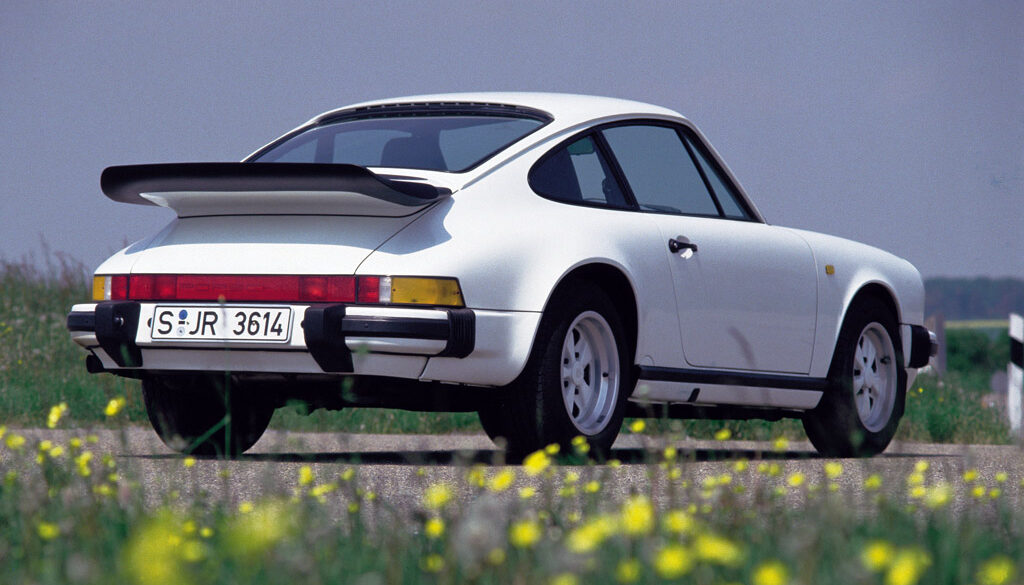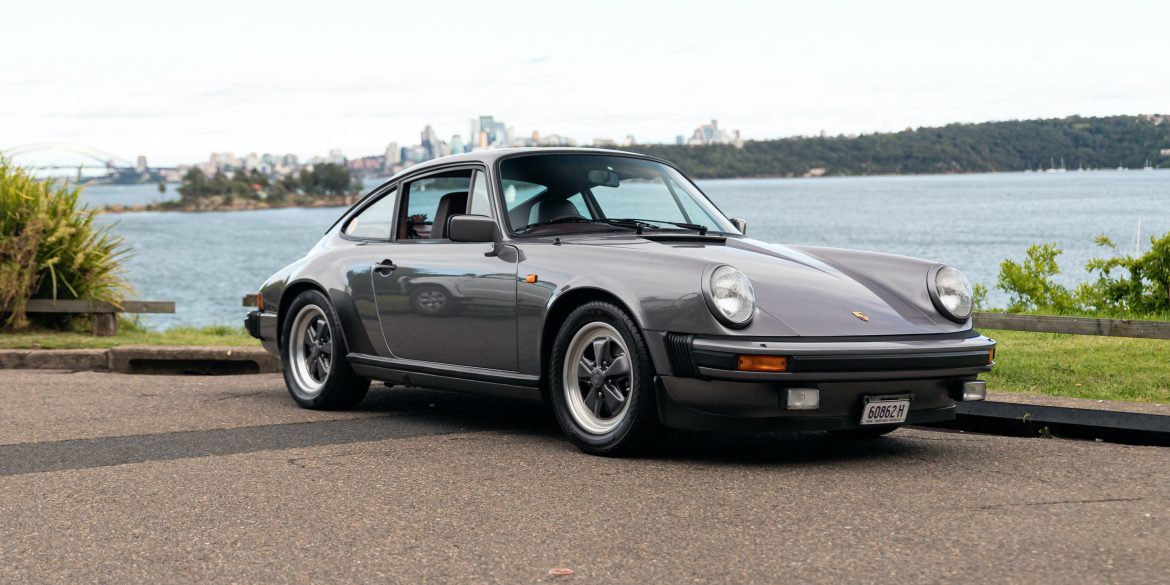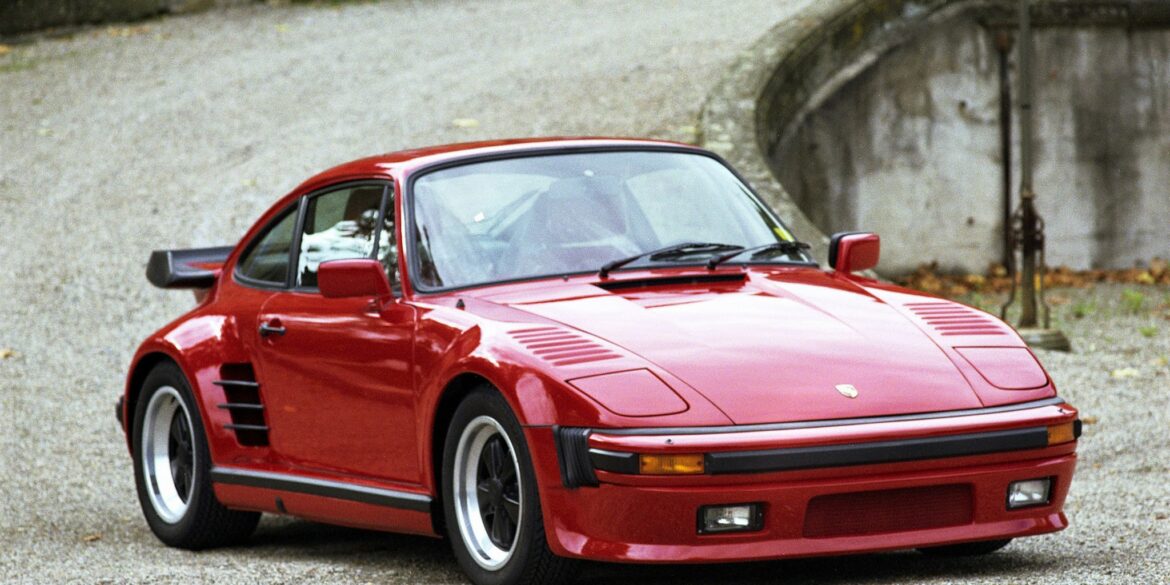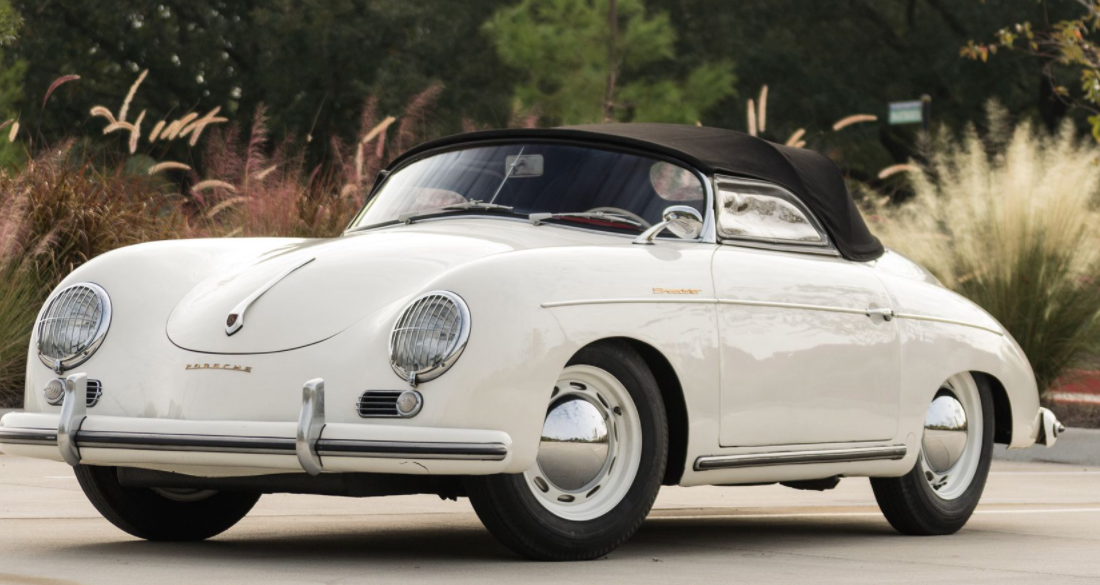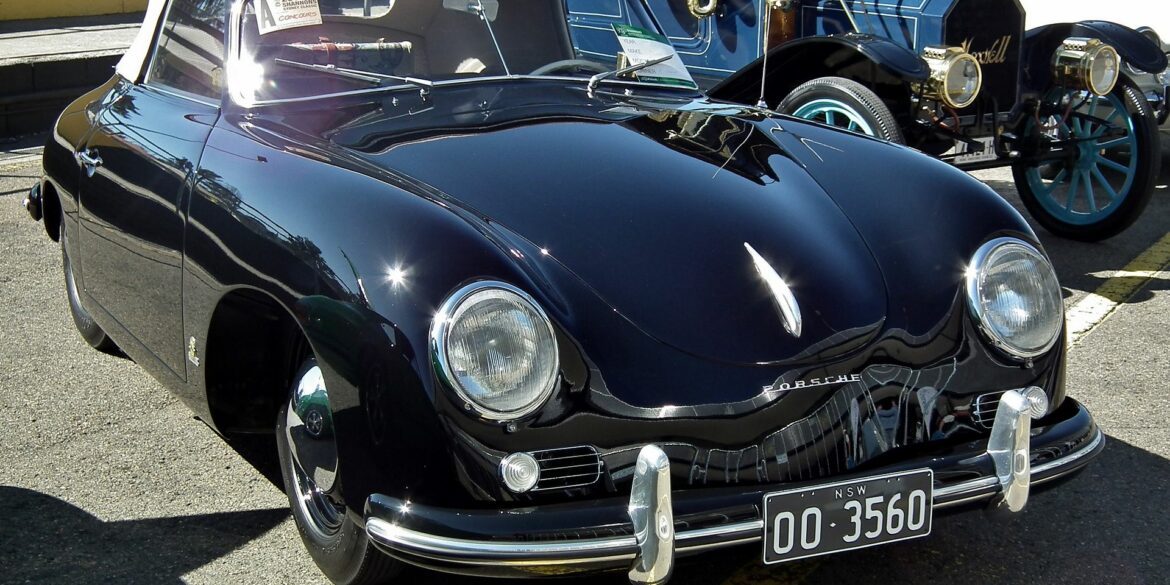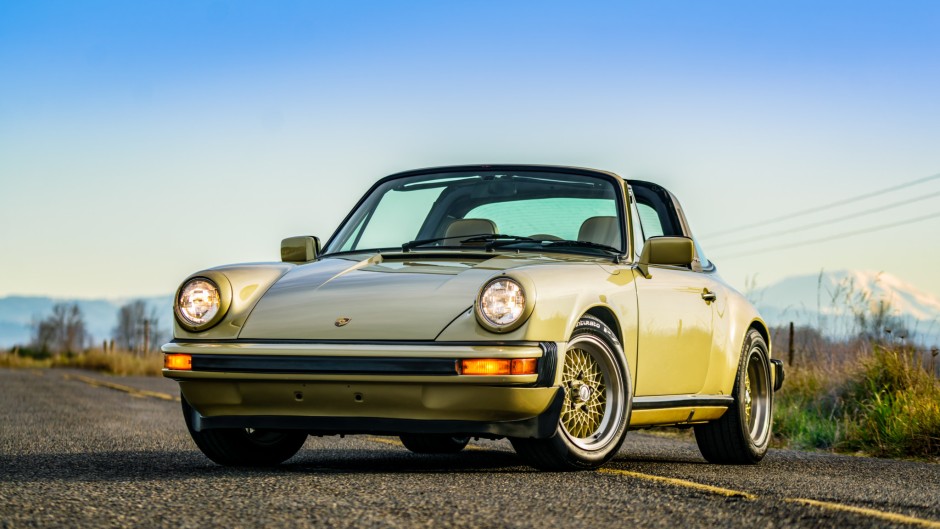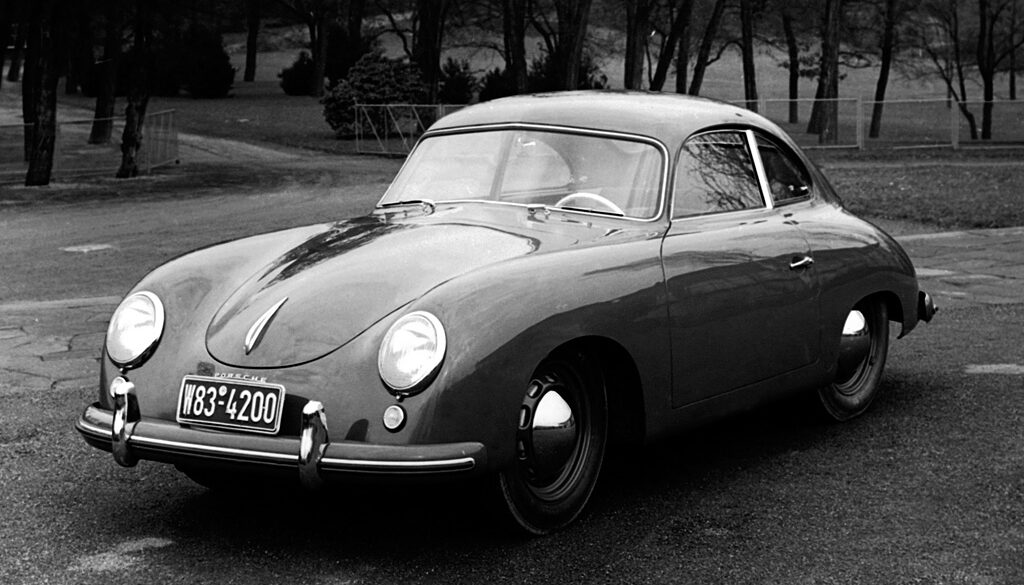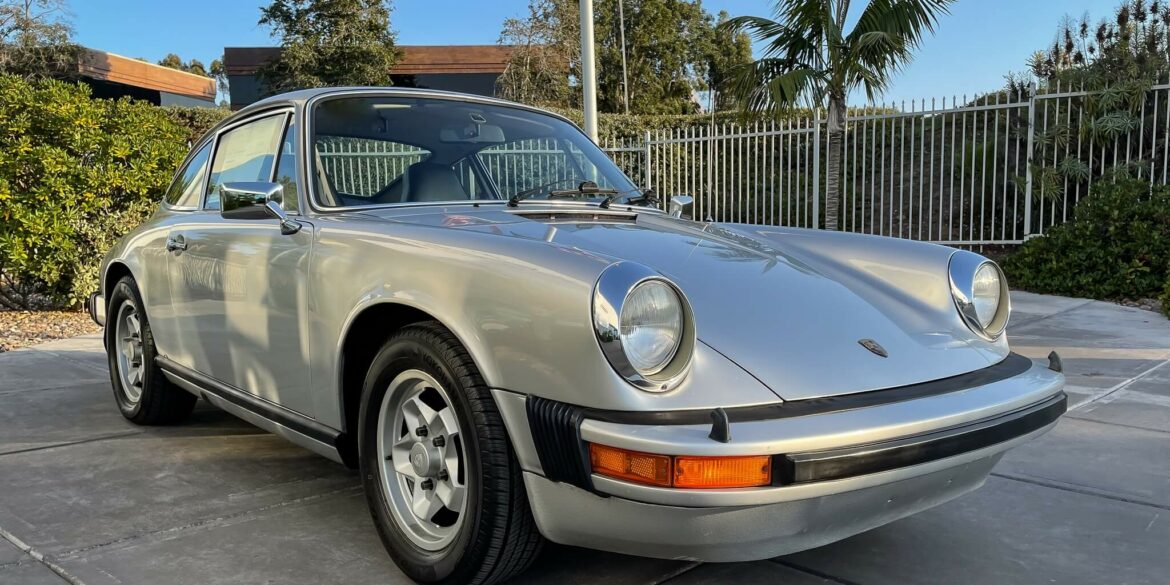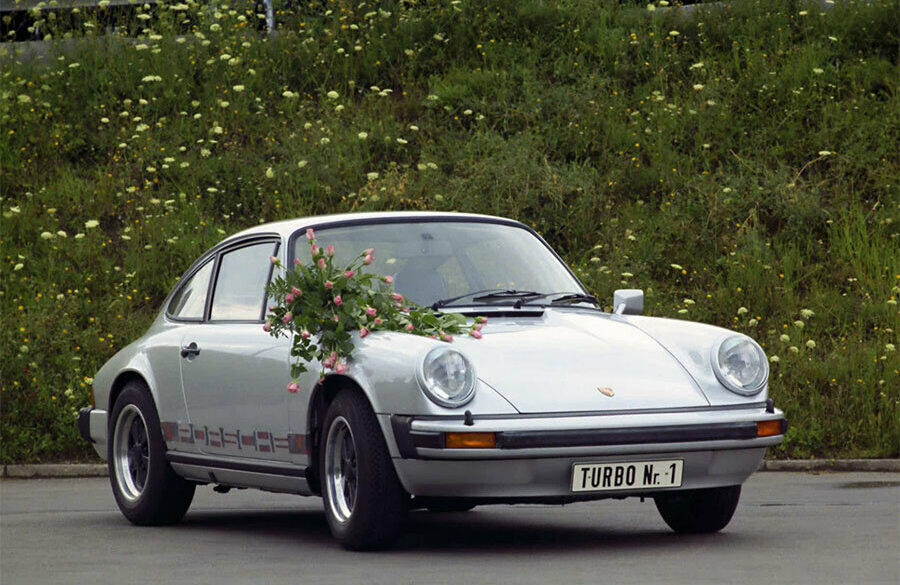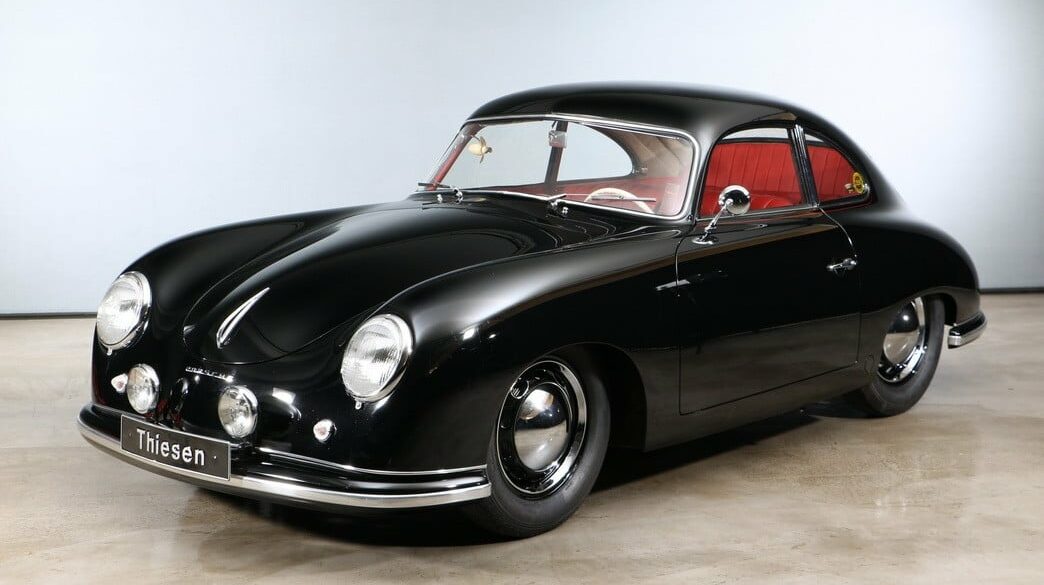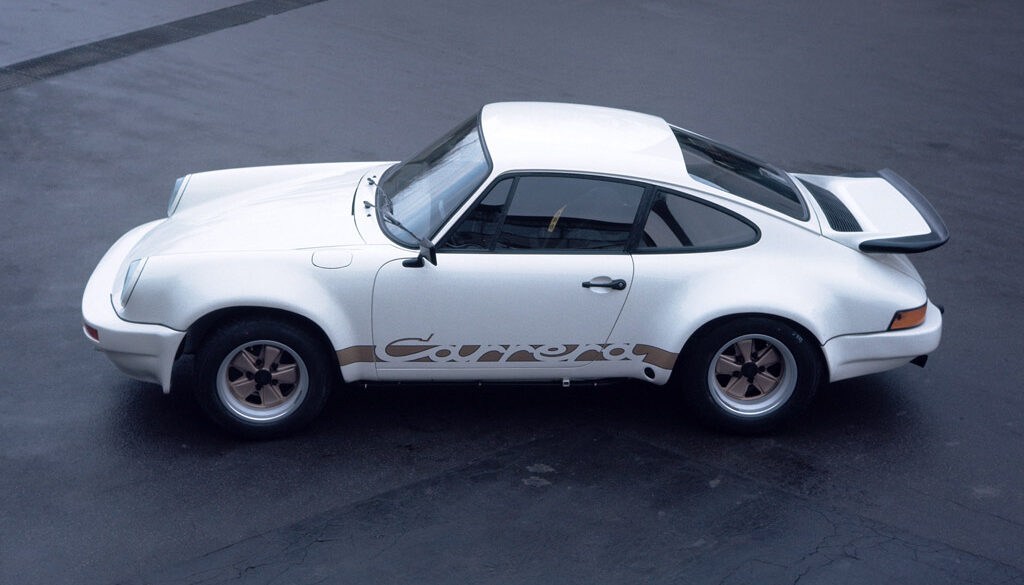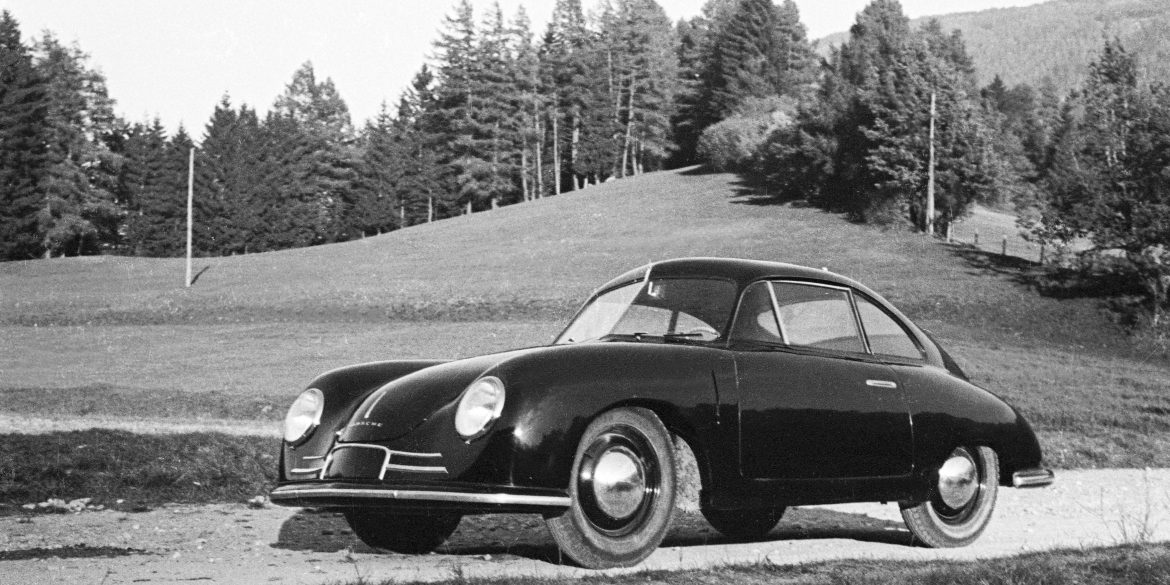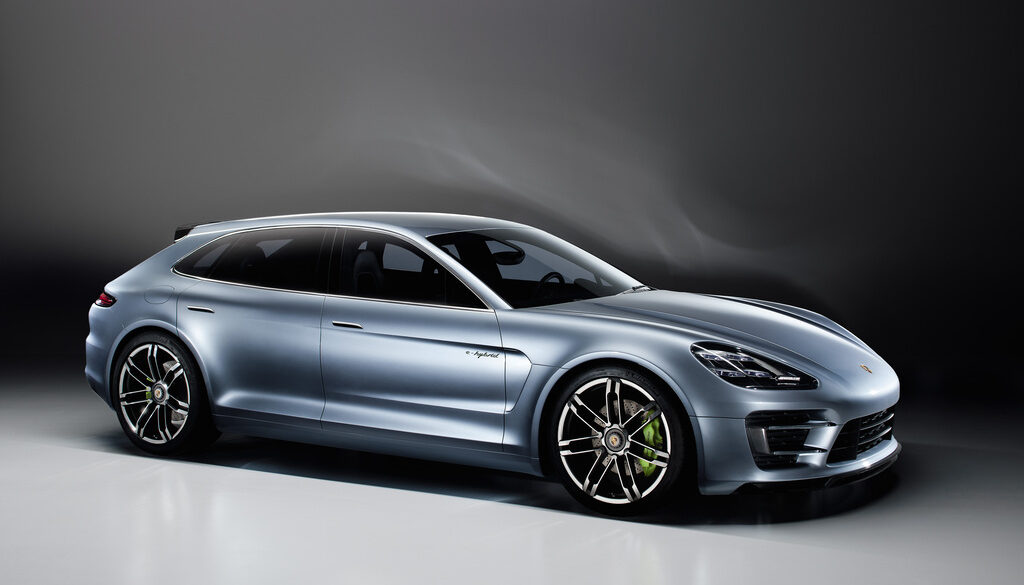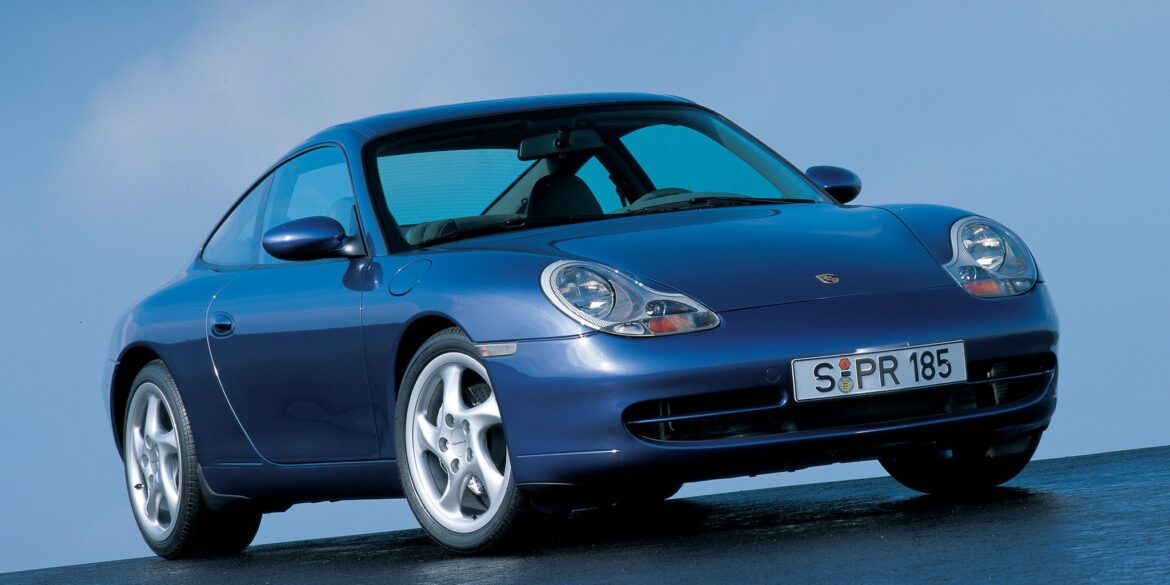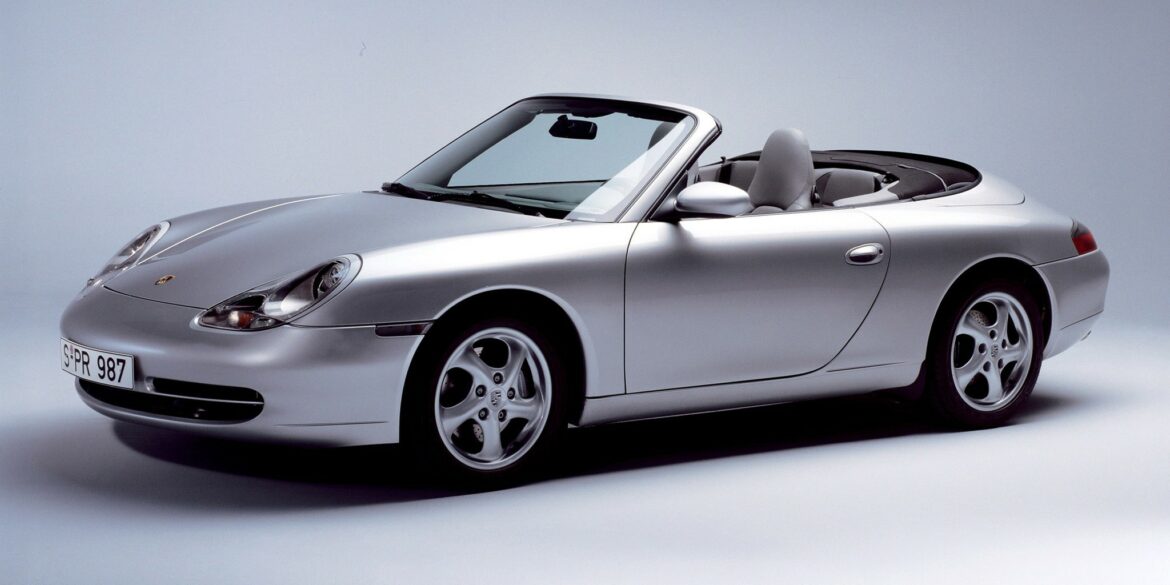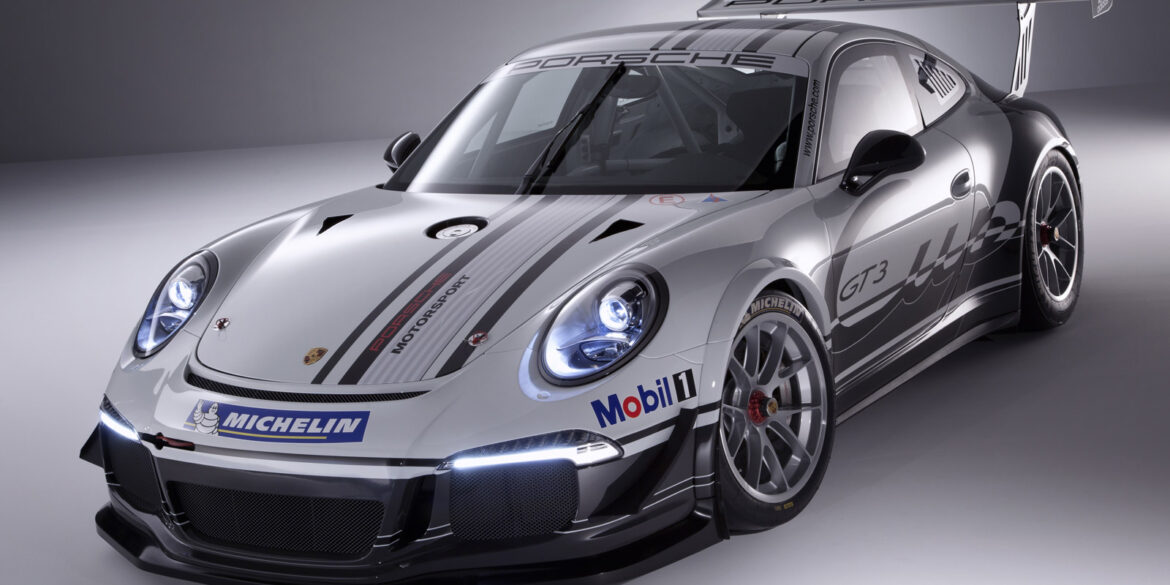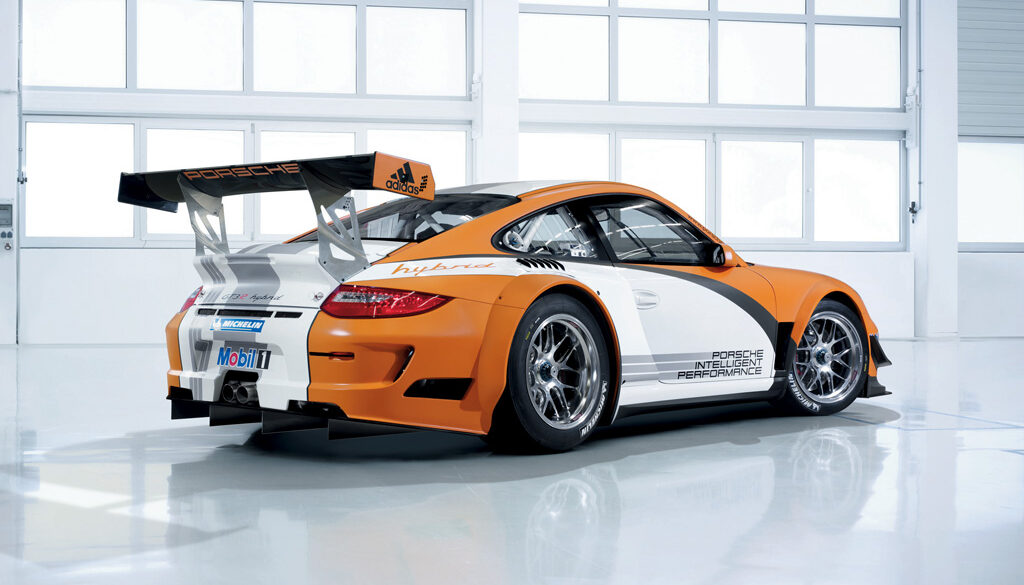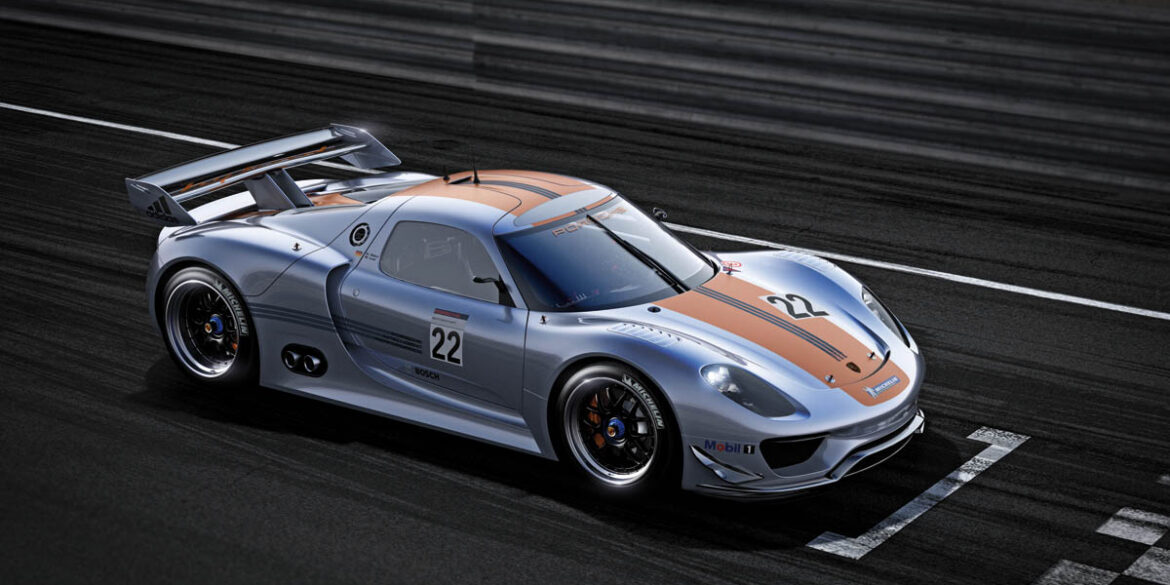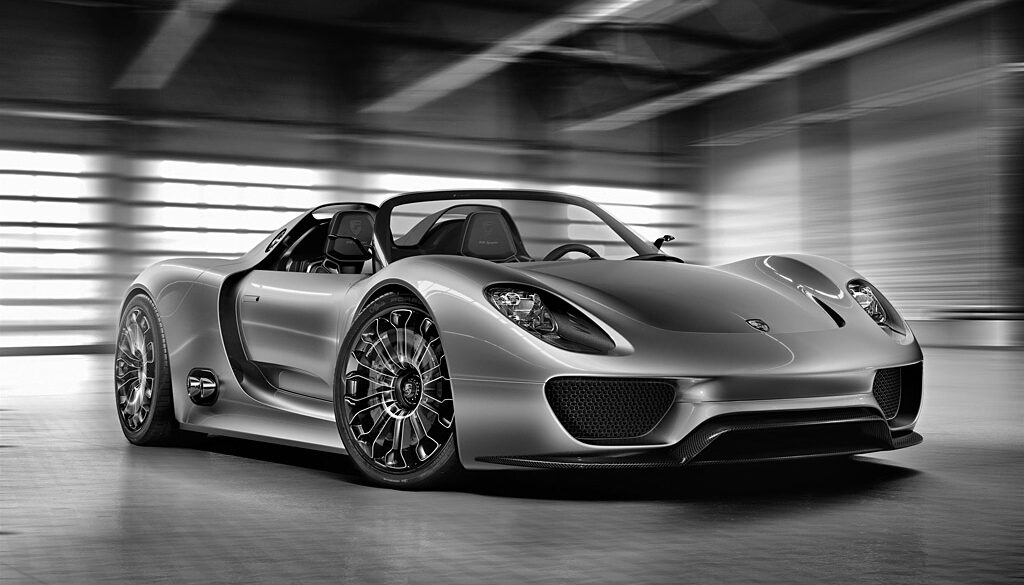The 2014 Porsche 911 Turbo Cabriolet is a great companion to its coupe sibling. The Porsche 911 Turbo Cabriolet delivers the same blend of dynamism, performance and efficiency offered by the Coupe. The turbocharged 3.8-litre six-cylinder engine delivers 520 bhp and it helps drivers accelerate from zero to 60 mph in just 3.1 seconds (there goes your hair style). Compared to the 997.2 Turbo Cabriolet the new Turbo Cab delivers 30 bhp more power and are 0.2 seconds faster in terms of their standard acceleration. It is also up to 15% more efficient and more luxurious and comfortable to boot.
The 2014 Porsche 911 Turbo is a technological extravaganza. Adaptive aerodynamics, four-wheel steering, torque vectoring, active four-wheel drive, adaptive dampers, launch control, twin-clutch automatic gearbox – you get the picture. This is the first time we've had a chance to sample all of this on British roads. Two versions are available; both are powered by an uprated version of the previous 911 Turbo's 3.8-litre twin-turbo flat-six engine. The new 911 Turbo has even more power and more electronic systems. It is still a straight-line monster that will blow you away in terms of the sheer might of that engine and traction.
The 993 Carrera RS is a lightweight, stiffer version of the naturally-aspirated 993 Carrera meant for ultimate street performance. At its heart was the 3.8-liter normally aspirated Type M64/20 engine producing 300 bhp at 6,500 rpm along with 262 foot-pounds of torque at 5,400 rpm. Looking to save as much weight as possible, every non-essential item from the car was removed. The Carrera RS tipped the scales at a 1,280 kg. About 1,000 Carrera RS were built, making it one of the rarest and most collectable 993-generation 911's produced. In addition to the Base Trim it was also available as the race-ready, street legal, RS Clubsport (option M003).
The 2012 Carrera 4S Cabriolet had the same wider rear track when compared to the non-S version of the vehicle. It wasn't something everyone would notice, but the difference was there for a reason, and that reason was the wider tires installed. From behind, a rear red light-strip united the LED taillights. Inside the Carrera 4S Cabriolet, there were some luxury features. The leather-covered sport-bucket seats were covered in leather. Even the rear, unusable, seats were wrapped in leather. The center console was higher to give a sense of a single-seat racing roadster.
The new all-wheel drive 911 is being launched on the market in four versions – as the 911 Carrera 4 and 911 Carrera 4S and each as Coupé and Cabriolet. The Coupé and Cabriolet of the 911 Carrera 4 S each have a 3.8-litre rear-mounted boxer engine that produces 400 hp (294 kW); this enables acceleration to 100 km/h in 4.1 seconds (Cabriolet: 4.3 seconds) and a top speed of 299 km/h (Cabriolet: 296 km/h) with a suitable equipment configuration. Fuel consumption values with PDK are 9.1 l/100 km (CO2 215 g/km) for the Coupé and 9.2 l/100 km (CO2 217 g/km) for the Cabriolet.
The new Porsche 911 Carrera 4 unites the excellent performance and efficiency of the new generation of the 911 Carrera with the dynamic benefits of the latest version of the active all-wheel drive system PTM (Porsche Traction Management). The typical Porsche all-wheel drive with rear-focused layout in this latest 911 version guarantees maximum vehicle dynamics on a wide variety of road surfaces and in all weather conditions. The new 911 Carrera 4 models deliver traction and dynamic performance the power of four.
The Porsche 906 Living Legend is a racing-inspired supercar concept, designed and built by Porsche in 2015. The 906 Living Legend was intended to be a ‘super sports car’; the road-legal vehicle features a mid-engine design and massive air vents for cooling. The car’s shape is undeniably fluid, with the front and back end establishing a particularly effective gradient. The 906 Living Legend’s design includes subtle, longitudinal strip brake lights.
The 2013 Porsche Carrera 4 featured a 3.4-liter flat-six engine. It was mated as standard to a world's first seven-speed manual transmission. An automatic, PDK (dual-clutch) transmission was offered as an option. The Carrera 4 featured an all-wheel-drive torque distribution in the instrument cluster display. The most distinctive identifying feature of the 911 with all-wheel drive is still the wide rear section: compared to the two-wheel drive 911 Carrera models, the rear wheel housings 22 mm wider, and each of the rear tires is 10 mm wider.
In 2015, Porsche's executive board ordered Weissach engineers to design and build the lightest sports car possible based on the 981. It was to be more minimalistic than the 981 Spyder. Some of the inspiration came from the 1968 Porsche 909 Bergspyder. This is one sexy one-seater and roofless extreme machine. It received the 3.8-liter Cayman GT4 engine, which was tuned to produce 387hp (up 7hp). Expected Nürburgring time of around 7:30 minutes.
The open-top 991 Carrera S Cabriolet requires an $11,600 premium over a comparable coupe; ta not-cheap $108,950 price point for those shopping. For that, you get the best overall open-top sports car around. With the 400-hp, 3.8-liter six and the benefit of the PDK automatic’s launch control, the Carrera S cabriolet should hit 60 mph in 3.8 seconds and cover the quarter-mile in the low 12s. Performance is on-par with the coupe on backroads so any fears that this is a soft-911 are thrown out the window. This is a serious sports car, sans roof.
The 991 Carrera S continued the time honored Porsche 911 tradition of growing in physical size and power. Over the years the 911 has continued its evolution from a pure sports car to a luxurious super-car and the 2012 Carrera S Coupe was no exception. The seventh generation 911 launched in 2012 and it sits on a new platform, with a longer wheelbase and shorter overhangs. It also featured new headlights and taillights. Features a 3.8-liter flat-six engine mated as standard to a world's first seven-speed manual transmission.
Porsche is doubling the driving fun to be had from the new 911 Carrera by putting a Cabriolet alongside the Coupé. The debut of the new generation of the sports car classic is being followed only a few months later by the open-top models of the 911 Carrera and 911 Carrera S in the new 911 design. What the Coupé began with the new aluminium-steel body, the Cabriolet continues with the all-new, unique hood: As a result, the typical 911 roof line is initially retained in its entirety.
The seventh generation 911 was revealed 2011 Frankfurt Motor Show as an all-new model. It sports a longer wheel base, seven-speed gearbox and more efficient 3.4-liter flat-6. Major options include a 7-Speed automatic transmission , dynamic engine mounts and a Sport Chrono Package with a dash mounted analog stopwatch. This package also features a Sport Plus button that changes the settings of the chassis, engine and transmission for spirited driving. Launch Control is also new.
Based on the already primal 997.2 GT3, the RS gets another 15 hp from the 3.8-liter flat-six for a total of 450, or more than 118 hp per liter. A racing machine tamed for street use, the GT3 RS is hardly just about horsepower. It gets a wider track, it weighs less, and it produces more downforce than the GT3. The only available transmission is a six-speed manual gearbox (with the ratios even shorter than the GT3). A racing machine tamed for street use, the GT3 RS also gets a wider track, it weighs less, and it produces more downforce than the GT3.
Even more powerful, faster and more dynamic than ever before, the updated 997 Porsche 911 GT3 (differentiated from the earlier with a new 997.2 designation) is about to prove its enhanced potential. The Porsche 911 GT3 now reaches an even higher standard in its two main qualities: power and driving dynamics. The naturally-aspirated six-cylinder now increased in size to 3.8 litres is 435 bhp (320 kW), up 20 bhp over the previous model. In particular, the flat-six power unit carefully upgraded for even more muscle and performance offers a significant increase in torque at medium engine speeds. Road performance is spectacular.
The 997 Sport Classic is a limited edition version of the 997.2 Carrera S coupé inspired by the 1973 Carrera RS 2.7. The engine is rated at 413 PS (304 kW; 407 hp) and features a newly developed resonance intake manifold with 6 vacuum-controlled switching flaps. It includes a 6-speed manual transmission, double-dome roof (informally called double bubble roof), 44 mm (1.7 in) wider rear fenders, SportDesign front apron with a front spoiler and a fixed 'duck tail' rear wing. Only 256 were made.
The 2008 Porsche 997 GT2 is the most powerful and fastest roadgoing 911 Porsche has ever created. Power for the 997 GT2 comes from a 3.6 litre, twin-turbo, flat-6 cylinder engine which develops 530 bhp @ 6500 rpm, and a tire destroying 505 lb-ft of torque @ 2200 - 4500 rpm. most of the power gains have been achieved with changes to the turbo-charging system and the addition of a high-flow titanium exhaust system. Power is transferred to the rear wheels of through a 6-speed manual giving the car a 0-60 mph time of just 3.6 seconds and a 204 mph top speed.
Porsche faithful are probably shaking their heads right about now. Porsche never officially made a production 993 Speedster. Notice we said “production.” In 1995, the company created a dark green 993 Speedster for Ferdinand “Butzi” Porsche 60th birthday. Jerry Seinfeld apparently felt left out; he commissioned a silver 993 Speedster in 1998, though it seemed to have begun life as either a Targa or Cabriolet before being sent to Porsche Exclusive. Only two 993 Speedsters were ever made; if you see one that’s not silver or dark green, chances are it’s a phony. The rarest among these models is the 911 Speedster.
The 997 911 GT3 RS is an even lighter and more purist version of the 911 than the regular GT3. 20 kilograms lighter than the GT3 and equipped with a close-ratio six speed manual the GT3 RS gets to 60 mph 1/10th of a second faster than the GT3. The 911 GT3 RS is 44mm wider at the rear than the GT3. The wider track helps improve directional stability when cornering. Weight savings can be found throughout the car. The Clubsport version there is a bolted roll cage, a six-point harness for the driver and a built in fire extinguisher.
If the 996.1 911 GT3 was all about the engine, in the 997.1 completes the rest of the formula. The surgical clarity of its transmission, steering, brakes, pedal weights and heights, and overall chassis balance represented a clear step-change from its regular 997 911 siblings. But the engine was still the heart of the car, the water-cooled 3.6-liter flat-six boasting a new intake and a new exhaust compared with the 996 versions. Official output was 415 hp, though insiders admit some engines made close to 430 hp. Launched in 2006, today this is in many ways the sweet-spot GT3, way more affordable than the later 4.0.
In recognition of the 50th Anniversary of the Porsche Club of America (PCA), Porsche has created an exclusive 911 Carrera' S Coupe model featuring a distinctive exterior color, unique interior styling and commemorative touches, and a more powerful and higher performing engine. Limited to an exclusive production run of just 50 cars initially made available to eligible PCA members, the 911 Club Coupe was unveiled this past weekend at PCA's 50th Annual Porsche Parade in Hershey, Pa.
The Porsche 911 Turbo Cabriolet (993 generation) is an incredibly rare car – only 14 were built in 1995, in the early days of 993 production. Rather than the contemporary twin-turbo powerplant in the 993 Turbo Coupe, the 993 Turbo Cab was fitted with the single turbo of the 964 Turbo 3.6. Although the Turbo Coupé was introduced earlier, the actual production started after the Turbo Cabriolets were sold. Turbo Cabriolets were 1995 models by VIN and Turbo Coupés were immediately produced as 1996 models although the 1996 model year had not yet started.
The 997.2 Turbo was introduced for the 2010 model year and received a new 3.8 litre engine capable of 493 horsepower, a significant evolution as compared to the 473hp in the 997.1 Turbo. The 997.2 Turbo was available in both manual and automatic transmissions, but the automatic evolved from the Tiptronic used in its predecessor, to a sportier dual-clutch PDK. Approximately 3,300 coupes were produced and 1,800 cabrios, far less than its predecessor. An epic all-around GT with more performance than you could ever need.
The 997.2 Turbo was introduced for the 2010 model year and received a new 3.8 litre engine capable of 493 horsepower, a significant evolution as compared to the 473hp in the 997.1 Turbo. The 997.2 Turbo was available in both manual and automatic transmissions, but the automatic evolved from the Tiptronic used in its predecessor, to a sportier dual-clutch PDK. Approximately 3,300 coupes were produced and 1,800 cabrios, far less than its predecessor. An epic all-around GT with more performance than you could ever need.
As with the previous 996 Targa model, the most striking feature of the car is the large, sliding-glass roof and glass rear hatch, which blend sleekly into the classic 911 lines while providing the Targa with its own unique personality. Like the rest of the range the Targa 4S got a visual refresh and the all-new direct injection engine. In the Targa 4S, it produced 380 bhp @ 6500 rpm and torque of 310 ft lbs @ 4400 rpm. 0 - 60 mph takes just 4.5 seconds (PDK) and top speed is 185 mph.
The 911 Targa received the same upgrades during the switchover to the 997.2 generation, including a boost in power and performance. The expansive glass roof now featured increased UV protection. This is the point in Porsche 911 Targa history when the model re-established itself as the perfect halfway measure between a true coupe and a convertible. Porsche engineered a wildly complex power-retracting center roof piece and left the rear glass fixed in place. Beyond this fabulous roof mechanism, it’s the same Carrera 4.
In the case of the 911 Carrera 4S Cabriolet that begins with a larger, more potent six-cylinder engine. The Carrera 4S is powered by a 3.8-liter flat six that produces 355 horsepower and 295 lb.-ft. of torque. The roughly ten percent increase in power translates to improved acceleration and higher top track speed. The 911 Carrera 4S Cabriolet with the six-speed manual gearbox races from a stop to 60 mph in only 4.7 seconds, topping out at the track at 185 mph. When carrying the optional Tiptronic S transmission, the zero to 60 mph sprint takes a mere 4.5 seconds.
For 2009, engine power is distributed to all four wheels via the same electronically controlled Porsche Traction Management system found previously only on the Porsche Turbo. The electronic controls respond to driving conditions even more instantaneously than the previously used hydraulically activated all-wheel drive system. The Carrera 4S model, with a 3.8-litre engine developing 355 bhp, can go from 0 to 60 mph in 4.5 seconds and has a top speed of 185 mph.
The 2009 Porsche 911 Carrera 4 Cabriolet shares the same internal 997 model designation as its Coupe siblings. It also shares the same essential all-wheel-drive architecture, interior appointments, suspensions and drivetrains. It is an open-top sports cars that deliver the same exhilarating acceleration and dynamic response as the coupes, regardless of weather or road conditions. The Carrera 4 Cabriolet boast a unique body over their all-wheel-drive powertrains with a wide-body design.
Most importantly, the refreshed Carrera 4 and 4S lose the old multi-plate, viscous all-wheel-drive system in favor of the electronically controlled system from the 911 Turbo. The old system could send between 5 and 40 percent of engine torque to the front wheels once it had detected wheelspin. The new electronic system can anticipate traction losses and shift up to 100 percent of engine torque fore or aft. Porsche says the new AWD system reacts faster to traction changes, and doesn’t make the Carrera 4 significantly heavier.
Like the rest of the range the Carrera S Cabriolet got a new 997.2 generation update. Not much is new on the outside, but the design refresh did give it a revised front bumper and larger air intakes, as well as by new large mirrors and the bright strip of LEDs below the headlights that serve as daytime running lights. Inside the car, there's a new communication management system, PCM 3.0 which includes a new touchscreen feature, is standard on all 2009 and onward 911s.
For the 997.2 generation, power from the 3.6-liter Carrera engine was increased to 345 hp while the Carrera S saw 385 horsepower from its 3.8-liter flat-six. Power was sent to the rear wheels via a standard manual box but for the first time, the 997.2 saw the introduction of the dual-clutch PDK as an option. The chassis remains largely unchanged, with slightly modified springs and dampers. The sports suspension is replaced with a variable, electronically controlled sports suspension based on the active PASM suspension. The sweet spot in the used car market at the moment.
The 911 Carrera Cabriolet is a true Porsche, from top to bottom. Like the rest of the range, the base Cabriolet got a mild refresh in terms of design that made it more modern and a little more crisp. The engine was upgraded, now with direct direction. The direct-injection 3.6-liter engine also got new air filters, a more free-flowing exhaust system, and reduced engine friction, making it more powerful than before. It has peak power of 339 bhp @ 6500 rpm and torque of 287 ft lbs @ 4400 rpm. The Carrera equipped with PDK covers 0-60 mph in 4.5 seconds and runs to a top speed of 179 mph.
Porsche refers to it as a new generation, even though the internal chassis code 997 remains unchanged. The 997.2 therefore is more of a mid-term facelift with some significant technological changes. Notably, the water-cooled flat-six engines get direct-injection technology, and a seven-speed, dual-clutch transmission replaces the previous five-speed Tiptronic automatic while the shift-it-yourself option remains a six-speed. Base Carrera coupe gets 339 bhp and 287 ft lbs and a 0.3 second faster 0 - 60 mph time of 4.5 seconds. Top speed now 179 mph. A nice update indeed.
The Type 964 911 first launch with an all wheel drive model. It was a serious investment by Porsche in updating the chassis and tech platform. The 964 Carrera 4 was powered by the M64/01 3.6 liter flat six engine, developing 250 bhp and 229 ft/lbs of torque. The objective of the C4’s all-wheel-drive system was not only to provide improved traction but also better handling, especially in the wet and on slippery surfaces. The system sends power front/back in a 31:69 ratio because a 50:50 split would have made the 964 feel like a front-wheel-drive car.
Like the 911 Turbo Coupe, the 997 Turbo Cabriolet is powered by a 3.6 liter six-cylinder boxer engine with biturbo turbocharging and Variable Turbine Geometry (VTG). The powerplant already generates 480 hp (473 bhp) and 460 ft lbs of torque at 1950 rpm. The manual transmission version can accelerate from 0 to 100 km/h in just four seconds while the Tiptronic S the time can be cut to 3.6 seconds. Top speed for the Cab is the same 193 mph as Coupe and only weighs 70 kilos.
The two 997 Targa 4 cars are both offered in only all-wheel-drive. Available with either a 3.6 litre flat 6 in the Targa 4, or with a more powerful 3.8 litre flat 6 in the Targa 4S, the new car offers almost all the fun of a convertible without sacrificing the dynamic abilities of a hardtop. The Targa 4S gets to 60 mph in 4.7 seconds and tops out at 179 mph thanks to its 3.8 liter flat six pumping out 350 bhp and 295 ft lbs of torque. It has softer spring rates than the coupe, a more generous helping of leather in the cabin, a better tally of standard equipment, more storage space behind the front seats.
The 997 Targa design is the same as the 996s, with the power-operated panoramic sunroof and lifting rear window glass. The 997 Targa version's entire operation benefitted from thinner glass that cut approximately 4.2 pounds from its weight relative to the prior 996-series Targa. The 997 Targa 4 has softer spring rates than the coupe, a more generous helping of leather in the cabin, a better tally of standard equipment. The Targa 4 might therefore be all the 911 you ever want; not the fastest or the most visceral, but certainly the most complete car in a very impressive bunch. A great all-rounder.
The sixth generation of the 911 series’ top-of-the-range model was unveiled at the 2006 Geneva Motor Show. The 997 911 Turbo has 473 bhp @ 6000 rpm, 60 bhp more than its predecessor. Rated torque is now 473 bhp @ 6000 rpm. The speed range in which this power is available has also been extended. While the previous model’s maximum torque was available between 2,700 and 4,600 revolutions per minute, the corresponding figures are now 1,950 to 5,000 revs. 0 to 60 mph is over in a blistering 3.6 seconds and top speed is 193 mph. The ultimate GT.
While the 997 Carrera 4S coupe sold a healthy 15,056 units between 2006 and 2008, the equally exciting Carrera 4S Cabriolet sold 12,587 units, making it a pretty popular 997 model. The reason is pretty simple. It had a gorgeous wide-body stance, all-wheel drive traction and that potent 3.8 L Flat 6 that was good for 350 bhp and 295 ft lbs of torque. The first convertible 911 that was as good a performer as it coupe siblings with the added benefit of open top driving in the summer with the comfort of being a great daily driver all year round.
Along with its sibling Carrera 4, the 2005 Carrera 4S offered an all-wheel-drive system for the Porsche 911, but unlike the 4, the 4S gets the Carrera S' more powerful engine and it turns out that makes a big difference. The Carrera 4S was the more powerful and more dynamic version of the 997 Carrera 4 and an overall great sports car, especially for those in colder climates who need the safety of all-wheel traction. All rounder that fits nicely in the 911 lineup as perhaps the most practical.
The Carrera 4 Cabriolet was released with the rest of the 4 and 4S models as 2006 model year cars. With a sure-footed, four-wheel drive powertrain as well as that "wide-body" stance, and with tops that open or close at the touch of a button, the Carrera 4 Cabriolet really started to make the case it could do it all. The wide look gave the 4 a widened track, larger wheels and tires and four-wheel-drive powertrain that gives more dynamic stability, especially in inclement weather conditions. Developed at the same time as the coupe.
The 997 Carrera 4 was the all-wheel-drive version of the standard 997 Carrera and it arrived as a 2006 model year car (along with the 4S models). The 997.1 Carrera 4 had a3.6 L Watercooled Flat 6 (M96/05) engine that was good for 321 bhp @ 6800 rpm and 273 ft lbs @ 4250 rpm. It had a sub 5 second 0 - 60 mph hour time and a top speed of 174 mph. The transmission (six-speed manual or five-speed Tiptronic) feeds a forward propshaft that mates to a viscous coupling unit with a front differential.
The Carrera S convertible was introduced to the market at the same time with the Carrera Cabriolet, a few months after their coupe-versions were unveiled. The convertible version for the Carrera S got reinforcements needed for the cabriolet built while the engineering was going on for the coupe, ensuring that the drop-top version was just as strong and performance-focused. It got the same engine as the Carrera S and made a case for itself as the best 911 of the range at the time.
The 997 Carrera S was the first step up in performance over the base 997 Carrera. Available over two distinct generations, the 997.1 Carrera S used a 3.8-liter engine producing 355hp – the available X51 Powerkit bumped that number to 376hp. From 2009 onwards, the 997.2 Carrera S offered 380hp from 3.8 liters. Besides a more powerful engine, it also comes standard with 19 inch wheels, larger brakes, and a lowered suspension with PASM.
Just a few months after the introduction of the 2004 911 (997 series), the convertible version was released. The release of the 997 911 Carrera Cabriolet marked the first time since 1977 that Porsche has given the convertible 911s the same engines as their Coupe siblings. The base 997 Carrera Cabriolet gets the 3.6-liter flat six-cylinder engine with 321 bhp and 273 ft lbs of torque. The convertible version for both Carrera and Carrera S was developed at the same time with the coupe.
The base Carrera has essentially the same 3.6 L flat-6 engine that its predecessor, the Type 996 Carrera used, now good for 321 bhp @ 6800 rpm and with torque of 273 ft lbs @ 4250 rpm. The sprint from 0 to 60 mph is over in just 4.80 seconds and top speed is 177 mph. The quarter mile is over in a respectable 13.1 seconds. The 911 Carrera is now faster, more stable, more precise and forgiving, an altogether superior-make that more efficient-sports car than the 996.
The limited production Boxster S Porsche Design Edition 2 debuted in October 2008 as 2009 model. It featured a free-flowing exhaust system, which raised power from 217 kW (291 hp) at 6,250 rpm to 223 kW (299 hp) at an identical 6,250 rpm. It came in a unified Carrera White paint scheme with matching white 19-inch wheels, a black and grey interior with white gauges, red taillights and light grey stripes along the body. 500 were made for the worldwide market, 32 shipped into the U.S. and 18 into Canada.
The original Porsche Boxster was a huge success and help Porsche grow its customer base, so when the second-generation Boxster (987) came to the US market as a 2005 model it wasn’t a surprise that it followed a similar formula. While the 987 Boxster retained only 20 per cent of the 986’s DNA, it looked similar enough to us that it felt more like a mild refresh than a totally new model update. The engine and transmissions were, for the most part, carry-overs, albeit with the obligatory and customary modest bump in performance and power (now at 240 horsepower).
The base model Porsche 924 was produced for model years 1976 to 1986. During its production run, VW decided to stop manufacturing the engine blocks used in this version (the 2.0 L 924), forcing Porsche to continue production for model year 1987 with a more powerful engine, calling it the 924S. The base model 924 had a production run of 121,000 vehicles approximately.
2,500 cabriolets were made in the 993 Carrera 4. The 993 Carrera 4, sold between 1995 and 1998, uses the same powerplant as the standard 993 Carrera, but puts power down to all four wheels through a 6-speed manual transmission. A “Carrera 4” badge on the tail, along with silver-painted brake calipers and clear front and side turn signals, help distinguish the all-wheel drive C4 from the C2 sibling.
The 993 Carrera 4, sold between 1995 and 1998, uses the same powerplant as the standard 993 Carrera, but puts power down to all four wheels through a 6-speed manual transmission. A “Carrera 4” badge on the tail, along with silver-painted brake calipers and clear front and side turn signals, help distinguish the all-wheel drive C4 from the C2 sibling. Approximately 4,700 coupes and 2,500 cabriolets were made. It was replaced by the Porsche 911 Carrera 4 (996 generation) in 1999.
Introduced in 1994 the Porsche 911 Cabriolet was more of a Grand Tourismo vehicle than a sports car. The 911 Cabrio featured the same cues as its coupe version, but with a few differences apart from the lack of a fixed roof, of course. The 3.6-liter engine was offered in two versions, with 275 hp and 285 hp. The latter featured the VarioCam system. Both versions were mated to either a 6-speed manual or a 4-speed automatic.
The 911 GT America was based on the 991 GT3 Cup. It was built exclusively for the United Sports Car Racing (USRC) series and its GT Daytona class for 2014. While the GT3 Cup had a 3.8-litre engine at the time, the GT America was fitted with a 4.0-litre unit developing 351 kW. The main visual difference is the rear spoiler made to fit the USRC rules. Like the GT3 Cup, the GT America has 380 mm steel brake rotors at the front axle with 6-piston fixed calipers.
Introduced in late 1994 the standard 911 Carrera of the 993 generation was fitted with a development of the M64 3.6-liter flat six that had been found in the prior 964 generation. With a redesigned exhaust system and new hydraulic lifters, the engine produced 272 horsepower. For the 1996 model year, a Targa variant was introduced, and a variable intake runner system (called VarioRam) was added to the entire Carrera lineup, bumping horsepower to 285. Approximately 23,000 coupes were built, 15,500 cabriolets, and 4,500 Targa's, in both manual and automatic (Tiptronic) transmission. Overlapping with the last year of production, it was replaced by the 911 Carrera of the 996 generation for model year 1998.
This isn't technically a Speedster, but the Type 540 (Typ 540 K/9-1 to be very precise) - known more commonly as the America Roadster - started the idea. The American Roadster was the direct predecessor of the Speedster. U.S. importer Max Hoffman convinced Porsche it needed a lightweight convertible to compete. It only had an emergency folding roof and could keep up with larger sports cars of the era. But the production methods used to create the America Roadster’s aluminum body proved to be too expensive, and in 1952 Porsche built only 21 units before its discontinuation in 1953.
For those who want more extreme performance, handling and track-day bragging rights, the RS is it. It's far from practical and may be too extreme for some, especially on the street, but on track it is exceptional. Only marginally quicker than the 991 GT3 that it is based on, but it delivers that performance with a different character. Massive grip, massive downforce and more extreme than the GT3. It delivers 80 per cent of the downforce of the full-on GT3 R race car, and with a carbon fibre bonnet and wings, a magnesium roof and polycarbonate rear windows and screen, it’s also light, weighing in at just 1,420kg.
Everything you need to know about the 991.1 Turbo S Cab comes from Car and Driver test results. "Launch control puts the computer in charge and sends the 3741-pound Turbo S Cab to the far side of 60 mph in just 2.8 seconds. A quarter-mile that nearly breaks into the 10s—11.1 seconds at 124 mph—attests to how serious this car gets when provoked. We saw 1.0 g on the skidpad and a stopping distance of 151 feet, both strong numbers abetted by the hilariously staggered Pirelli P Zeros (245/35 in front, 305/30 in back)". This is in a comfortable, all-wheel drive, grand touring convertible.
Porsche offered the 991 Turbo S from the start of the production of the 991 Turbo. The unique features of the Turbo S were the GT3 mirrors, slightly different front spoiler grilles and interior features. As before, the Turbo S was a heavily equipped version of the Turbo. The powerkit added 29 KW of power and the following equipment came as standard: PDCC hydraulic rollbar system, Sport Chrono (Launch control and 0.15 bar overboost functions), dynamic engine mounts, PCCB Porsche Ceramic Composite Brakes, central lock wheels, full LED dynamic headlights, 18-way Sport Plus seats with memory.
Porsche introduced the 991 GT3 for the 2014 model year, as follow up to the multiple 997 GT3 variants. The 991 GT3 featured a new 3.8 litre direct fuel injection (DFI) flat-six engine developing 475 hp (354 kW; 482 PS) at 8,250 rpm, Porsche's Doppelkupplung (PDK) double-clutch gearbox, and rear-wheel steering. The 911 GT3 is claimed to be able to accelerate from 0-60 mph (97 km/h) in 3.1 seconds or less, and the quarter mile in 11.2 seconds at 126 mph (203 km/h). It evolved into the 991.2 GT3 for model year 2018.
The 2014 50th Anniversary Edition 911 was built by Porsche to commemorate the 911’s birthday, 50 years after its production launch in 1964. In homage to 1963, the year the 911 debuted at the 1963 Frankfurt Motor Show, production was limited to 1,963 units. The 50th Anniversary uses the wider body from a Carrera 4S (but remains only rear-wheel-drive) and is lower than a standard Carrera by 10mm. The 20 inch-alloys are a modern take on the original Fuchs wheels, and the seats are finished in “Pepita” cloth. Includes Porsche Active Suspension Management (PASM), sports exhaust and powerkit tickled 430 hp flat six.
In 1988, Porsche produced 875 examples of the CE or Commemorative Edition 911 Carrera in coupe, targa and cabriolet variants to mark the production of the 250,000th 911. Distinguishing features include special diamond blue metallic paint with color-matched Fuchs wheels, front and rear spoilers, and interior carpets and leather. These cars also featured Dr. Ferdinand Porsche's signature embroidered on the seats in the headrest area.
Just 50 ‘C16’ cars were manufactured for the UK-market, initially equipped with an uprated engine of 330bhp (from 300) mated to a 4-speed transmission. However, at the end of 1988, the uprated 5-Speed G50 gearbox was introduced, dramatically easing the peaks in power delivery by reducing the effects of ‘turbo-lag’. The factory SE also benefited from a dual-exit exhaust system, limited-slip differential, heated front seats and a sunroof.
The 911 Carrera Club Sport was Porsche refocusing on what they do best – high performance, lightweight motoring. This is probably the most underrated Porsche ever made. Manufactured between August 1987 and September 1989 only 340 cars. It had a blueprinted, high revving engine mated to a modified short-shift, close-ratio G50 gearbox. It had track-bias suspension modifications too.
Porsche introduced a new wide-body package option. Known as the M491 option it was commonly known as the "Turbo-Look". It gave the naturally aspirated cars the look and style of the 930 Turbo with wide wheel arches and the distinctive "tea tray" tail. It wasn't just about looks however, because M491 also got you the stiffer suspension shared with the Turbo and the superior Turbo braking system as well as the wider Turbo wheels. It was available on the Coupe, Cab and Targa.
Finally, in 1982 the model 911 SP 'Ferry Porsche' was introduced as a special edition to celebrate 50 years of Porsche. This special edition was finished in Meteor metallic paint with burgundy leather interior and a 'Ferry Porsche' signature on the headrests. Only 200 of these now-classic special cars were built (130 Coupes and 70 Targas). The 911 SC “Jubilee” or “Ferry Porsche” is the first “limited series” sold in Europe.
Beginning in 1954, a new version of the Pre A 356 was introduced that is now known as the Porsche 356 Pre-A Carrera, with a powerful engine that was available in coupe, cabriolet, and Speedster variants. Highly desirable today, the Carrera name denotes the race inspired 1500 cc four cam motor that produced an astounding 110 hp. Approximately 97 of these motors were produced sometime between 1954 and early 1955. The Carrera versions would continue in the next generation 356 as the Porsche 356 A Carrera.
Slantnosed and based on that of the 935 racecars, with pop-up headlamps. The front spoiler was made deeper in order to accommodate the extra oil cooler, while intakes in the rear wings fed air to the brakes. The larger turbocharger and four-outlet exhaust gave 30bhp of extra power. Porsche began their “special order program” offering a Flachbau option (Slantnose) for the 930 in very limited production. All of this at a cost of nearly 2 times the standard 930S.
In 1980, a true limited edition model 911SC was produced for the American market. The 'Weissach' edition was a standard SC with special paint. It was built in 1980 to honor the Porsche Motorsport team working in Weissach Germany. 468 units were made and half were painted Metallic Black, the other half in Platinum Metallic. The interiors were wrapped in Doric Grey leather with burgundy piping. Additional body and mechanical specs included whale tail spoiler, Bilstein dampers and Fuchs wheels.
Generally speaking the early models or so called ‘Pre A 356′ models are more desirable than the later models. At the top of the pyramid and the most exclusive is the Carrera version which carries the legendary 4 cam ‘Fuhrman’ engine. But just below that comes the ‘Super’ speedster. The ‘super’ version had more horsepower (75 vs the standard 60) and the powerful ‘type 528 engine’ for the 1500 Super version.
An export hit, built in response to customer demand: the American importer Max Hoffman requested a Porsche costing less than 3,000 dollars for his market. The 356 Speedster was the answer, naturally with a spartan equipment specification. But the lightweight car was a big hit in the USA. It was used mainly for motor racing and soon became a regular feature of the motor sport scene.
The 'Martini' edition of 1978, was identifiable by a set of side stripes similar to those that appeared on the 1976 British Motor Show 911 Turbo which was clad with the stripes to celebrate victories in the World Manufacturers Championship and the World Sports Car Championship, as well as the fourth consecutive racing season with sponsors Martini & Rossi. The stripes were so popular that Porsche quickly made them an option available to any owner as a factory or retro fit.
In 1953, the 1300 S or "Super" was introduced, and the 1,100 cc engine was dropped. The 360 1300 Super boasts a power improvement to 60 BHP with Porsche's "Super" engine in the Porsche 356 model range. Minor visual differences were implemented such as front indicators integrated with the horn grilles and bumpers protrude from the body with over-riders. In June 1954, the plain-bearing 1300cc engine switched over to the same block as the 4cc larger roller-bearing variant.
Commemorating 25 years of Porsche sports car production, the 911S Silver Anniversary Edition is distinguished by unique Diamond Silver Metallic paint and a special black leatherette and tweed interior. The first of Porsche’s commemorative ‘celebration’ cars, this Silver Anniversary was produced in a limited run of 1,063 examples, of which approximately 500 are reported to have made their way to the United States.
Towards the end of 1951 Porsche introduced a larger version of the flat four engine. It was offered alongside the original 1.1 litre engine. It took a lot more effort to develop the third variation on the four cylinder theme; the '1500.' Introduced in the 356 1500 during 1952, the engine produced 55 bhp. Porsche's competition department reworked the 1500 engine with hotter cams and bigger Carburetors, boosting power to 70 bhp. In 1952 this engine found its way into a new road car; the 356 Super.
The 1500 was Porsche’s newest engine which was quickly fitted with 40 PIBC Solex carburetors to produce 60 bhp @ 5000 rpm in 1952. These retained the Hirth roller-bearing crankshafts which gave Porsche enough clearance to enlarge their engine to 1500cc. Most cars from 1952 until the 356A of 1956 were powered by the 1500 engine but some left the factory with the smaller 1.1 and 1.3-liter engines. At the request of American importer Max Hoffman, 356s for the 1955 model year were badged as Continentals before reaching the U.S
Commemorating 25 years of Porsche sports car production, the 911S Silver Anniversary Edition is distinguished by unique Diamond Silver Metallic paint and a special black leatherette and tweed interior. The first of Porsche’s commemorative ‘celebration’ cars, this Silver Anniversary was produced in a limited run of 1,063 examples, of which approximately 500 are reported to have made their way to the United States.
The first road-going 911 Turbo was not the familiar 930 that entered production in February 1975. Nor was it the engine-less prototype that had appeared at the Paris Motor Show in October 1973. Instead, it was a one-off narrow-bodied mule that was subsequently gifted to Ferry Porsche’s sister, Louise, on her 70th birthday in August 1974. Built on chassis 9115600042, this 2.7 Carrera Turbo also pre-dated the prototype 930 that was shown in almost production-ready at Frankfurt show in 1974.
The Porsche 356 Pre A Coupe and Cabriolet were introduced in 1950 and was available through mid-1955. Beginning in 1950 it was offered with a 1100 cc flat four that produced 40 hp. In 1951, a bigger 1.3-litre Type 506 engine was announced. It marked the first significant move away from the original Volkswagen unit. Bored from 73.5mm to 80mm (stroke was unchanged at 64mm), displacement rose from 1086cc to 1286cc. Further enhancements included lightweight alloy cylinder barrels and nosed pistons. Output rose from 40 bhp to 44 bhp and torque increased from 51 lb-ft to 60 lb-ft.
Following the famous 1973 F-model 911 Carrera RS 2.7, Porsche built its successor based on the G-model and it was called the 911 Carrera RS 3.0. With its 172 kW engine, it was the most powerful series production street-legal Porsche made so far. With its new 3.0-liter engine, featuring mechanical fuel injection, it was capable of 230 hp. While 1,580 Carrera RS 2.7s were built for 1973, only 56 Carrera RS 3.0s were built for 1974.
The series production didn't allow the use of handmade aluminium body panels, so, the cars were made of stamped steel panels. The first Stuttgart-built 356 have later been called as 356 Pre-A. These cars have either two separate windscreen glasses like the 356 built in Austria, or a sharply bent windscreen glass! Introduced in 1948, the Porsche 356 Pre-A Coupe was the first variant available for the Porsche 356. The engine started as a 1100 cc flat four that produced 40 hp. It was available as a coupe and cabriolet body style.
Of the 52 cars made in Gmünd, only eight were built up as cabriolets. Each was outsourced for its body and interior construction. Six cars were sent to Beutler who constructed them with a slightly different shape than the factory coupes. Included was a kicked-up rear fender line which was used on several of the Buetler cabriolets.
With lessons learned from 356 No. 1, Porsche developed the 356/2 as a production-ready version. The biggest concession to useability was repositioning the engine back behind the rear wheels as the original VW design. Like 356 No. 1, 356/2 was built as two-seat roadster using VW parts.
The Porsche 356/1 was the first real car created by Ferdinand "Ferry" Porsche. This prototype car was a two-seater open roadster with a mid-mounted, air-cooled flat-4 engine of 1,131 cc displacement. While the body was an original design, most of the mechanicals were from the Volkswagen Beetle. Only one 356/1 was made.
Porsche is presenting the Panamera Sport Turismo concept car to show how amazingly intelligent and efficient drive technology might look in the design language of tomorrow. The Sport Turismo unites the next generation hybrid drive with new ideas for an evolutionary, sporty body concept; it combines Porsche performance with comprehensive everyday practicality.
The 996 Cabriolet was introduced in March 1998 at the Geneva Motor Show. The 996 Cabriolet was long ready (remember, it was tested already in 1995), but for marketing and production-related reasons it was launched in 1998 as a 1999 model. While the evolution with the 911 coupe was questionable from 993 to 996, the real evolution came with the cabriolet. In USA - the biggest market - 911 Cabriolets outsold the Coupés. The all-wheel-drive system provides between 5-40% of torque to the front wheels depending on the situation.
Since 1989, the rear-wheel-drive Carrera has always been accompanied by an all-wheel-drive Carrera 4, and the 996 was no different. Overlapping with the last year Carrera 993'S, the 996 Carrera 4 represented two major changes for the venerable 911 lineage: a water-cooled flat-6 engine replaced the air-cooled engine used in the previous 911 model, and the body shell received its first major re-design. Engine was 3.4 L and power was 296 hp featuring a change to an "integrated dry sump" design and variable valve timing.
The flat six in the Carrera 996 was a newly-developed flat-six engine that offered 300 hp. It was mated as standard with a six-speed manual. A 5-speed automatic (Tiptronic) with manual override to shift gears was on the options list. As always, the Carrera 2 was rear-wheel-drive. Designed as a grand tourer, the Porsche Carrera Cabriolet was the base version for the open-top 911 range in 1998. The retractable roof was able to be stowed away in 20 seconds at speeds of up to 50 kph (31 mph), like the rest of the 911 convertible range. With the roof up, the car was tested in the wind tunnel at speeds of up to 338 kph (210 mph).
The 996 series was a monumental update to the 911 story. The Type 996 introduced water-cooled engines and it also ushered in a new body design. The roof line with a windscreen which is around five degrees flatter gives the side view a more fluid look. Gone was the "classic" 911 design, the entire main body now much sleeker. The flat six in the Carrera 996 was a newly-developed flat-six engine that offered 300 hp. It was mated as standard with a six-speed manual. A 5-speed automatic (Tiptronic) with manual override to shift gears was on the options list. As always, the Carrera 2 was rear-wheel-drive.
Launched in August 1991 for the 1992 model year, the 968 was available in two body styles: a Coupe and a Cabriolet. Cabriolets came with reinforced bodyshells to compensate for the lack of a roof. Porsche quoted a weight of 1370kg for the Coupe and 1440kg for the Cabriolet. Cabriolet top speeds were slightly slower owing to their messier aerodynamics, but it was dynamically pretty impressive despite the non-coupe body.
The Porsche 968 was a new-and-improved version of the Porsche 944. The 968 also came with an upgraded engine, an improvement on the 2.7L M44/12 16-valve inline-four cylinder engine found in the last base Porsche 944 model from 1989. The new engine now has a 3.0L capacity and makes 237 horsepower, a 64HP upgrade from the 2.7L model. In addition to the engine, the 968 also came with a new transmission. The 944 has a 3-speed automatic or a 5-speed manual transmission.
The new Porsche 911 GT3 Cup is powered by a 3.8-litre six-cylinder flat engine. It generates 460 hp (338 kW) at 7,500 revs, surpassing the predecessor by 10 hp. A six-speed dog-type gearbox developed by Porsche Motorsport which is operated via shift paddles at the steering wheel for the first time in a Porsche brand trophy race car transmits the power to the rear axle. The single piece race wheels with centre mount were also new.
As the rules do not permit higher output engines, the engine for the 991 RSR was taken from the 997 GT3 RSR 4.0 and the development work focused on the chassis, body, aerodynamics and the gearbox. A wishbone front suspension replaced the McPherson struts used in 997. A new development was the lightweight gearbox. One of the priorities in the development was the more evenly balanced weight distribution. The centre of gravity was lower, too.
Porsche 918 Spyder Prototype is a combo of mis-matched Porsche parts that looks more like a Frankenstein car than a cutting edge technical automotive marvel. But don't let the crazy exterior fool you because underneath, the 918 Spyder Prototyp is a pure science experiment designed to wow us in a few years.
This concept car was kept in secrecy until 2020. Under the cover there is a Volkswagen XL carbon fibre monocoque chassis and the car could have been powered by a high-revving motorbike engine. The 1:1 hard model of the possible future 904 looks similar to the Porsche 918 supercar from the front and to the F. A. Porsche designed 904 Carrera GTS supercar from the side. It looks just perfect!
In 2013, a small team from Weissach developed a tribute to the 1970 Le Mans winner. The concept utilizes adaptive aerodynamics with Salzburg livery like the original. Carbon Fibre skin, carbon fibre Monocoque and a turbocharged eight-cylinder engine with up to 1,000 PS provides the power. The front and rear suspension are based on 918 components, utilizing motorsport-inspired linkages and pushrods.
The Porsche 997 GT3 R Hybrid 2.0 is an update to the 997 GT3 R Hybrid. Compared to its predecessor, which debuted in 2010, the 2011 second-generation hybrid is 20 percent lighter and more efficient without any concession to lap times. While sharing the same paint scheme, the new vehicle is easily identified by its lack of intakes in front of each rear wheel - changes to engine cooling allowed the slats to be dropped and aerodynamic efficiency improved. It gets a traditional race-bred flat six engine. The GT3 R Hybrid has a completely independent second driveline in the front of the chassis, a clever and complex hybrid electric set up that rockets it from standstill to 60 mph in just 2.5 seconds.
During the Geneva Motor Show, a Porsche 911 GT3 R with innovative hybrid drive is making its debut. The innovative hybrid technology featured in the car has been developed especially for racing, standing out significantly in its configuration and components from conventional hybrid systems. In this case, electrical front axle drive with two electric motors developing 60 kW each supplements the 480-bhp four-litre flat-six at the rear of the 911 GT3 R Hybrid. Instead of batteries, an electrical flywheel power generator delivers energy to the electric motors.
Made as a demonstrative show-car, the 918 RSR ‘Racing Lab’ was part of a new initiative called Porsche Intelligent Performance which will likely develop hybrid racing cars for outright victories at events like the 24 Hours of Le Mans. The concept version revealed at Detroit has the same visual styling cues as the Spyder released in 2010 with the hybrid drive system from the 911 GT3 R Hybrid.
The 918 Spyder concept combines high-tech racing features with electric-mobility to offer a fascinating range of qualities. The highly-innovative 918 Spyder concept car combines Porsche's Intelligent Performance philosophy with the high-technology from motorsport, with classic but modern design to make a truly convincing statement.


